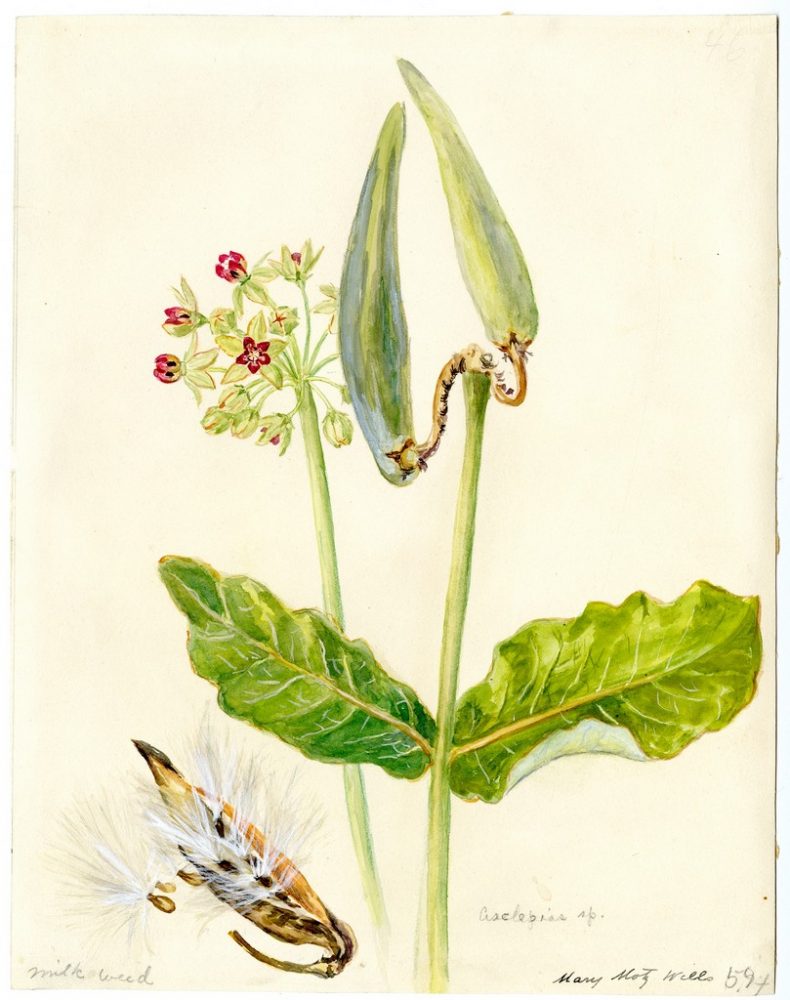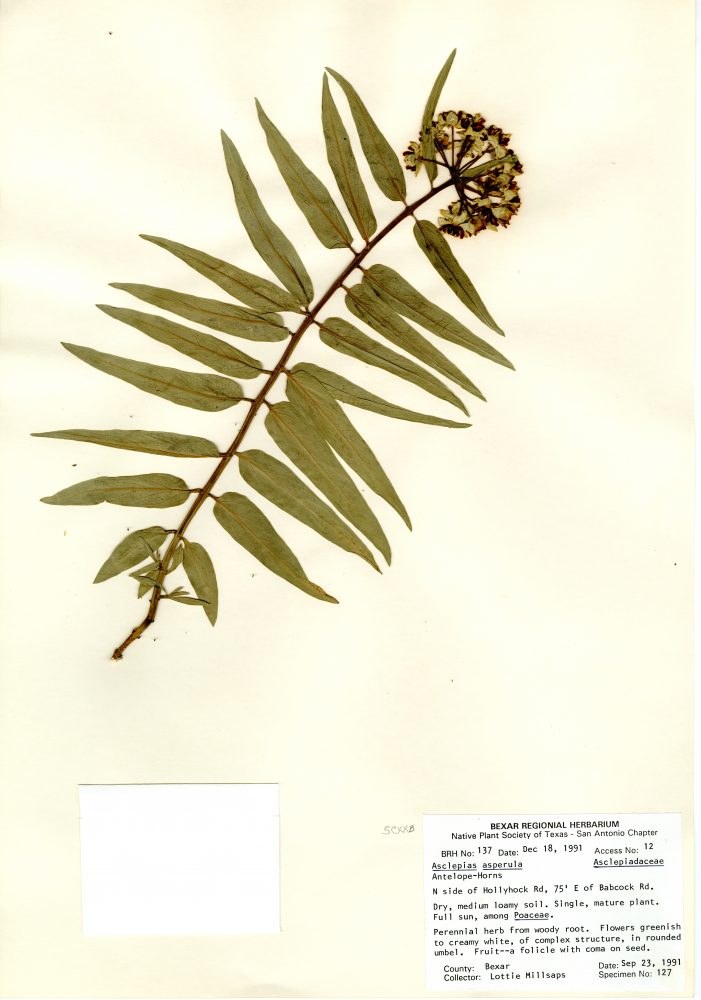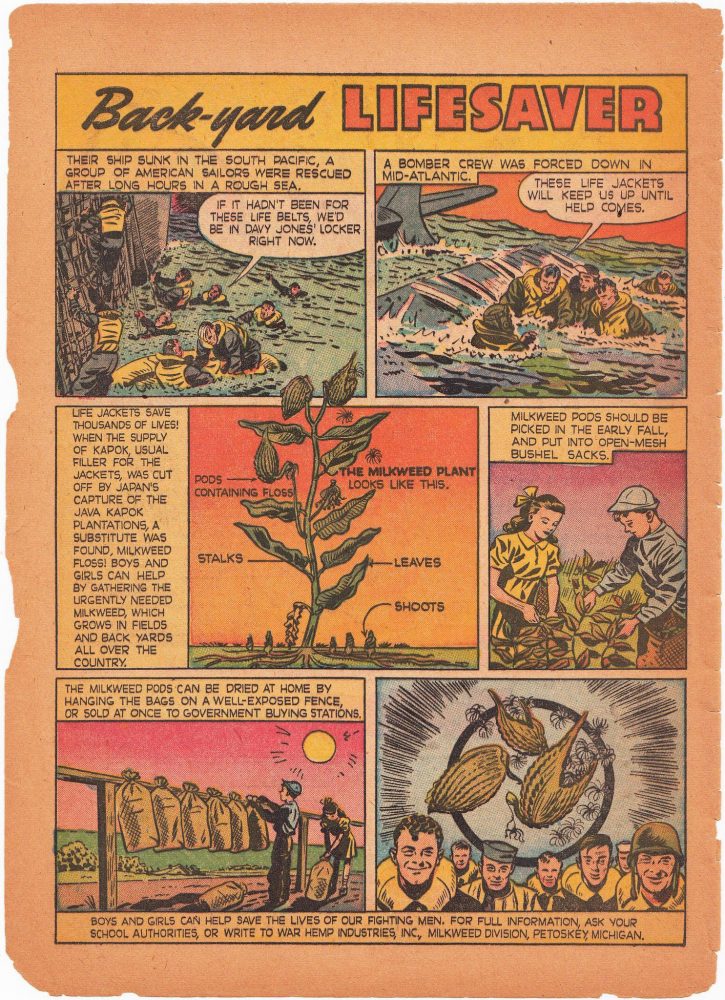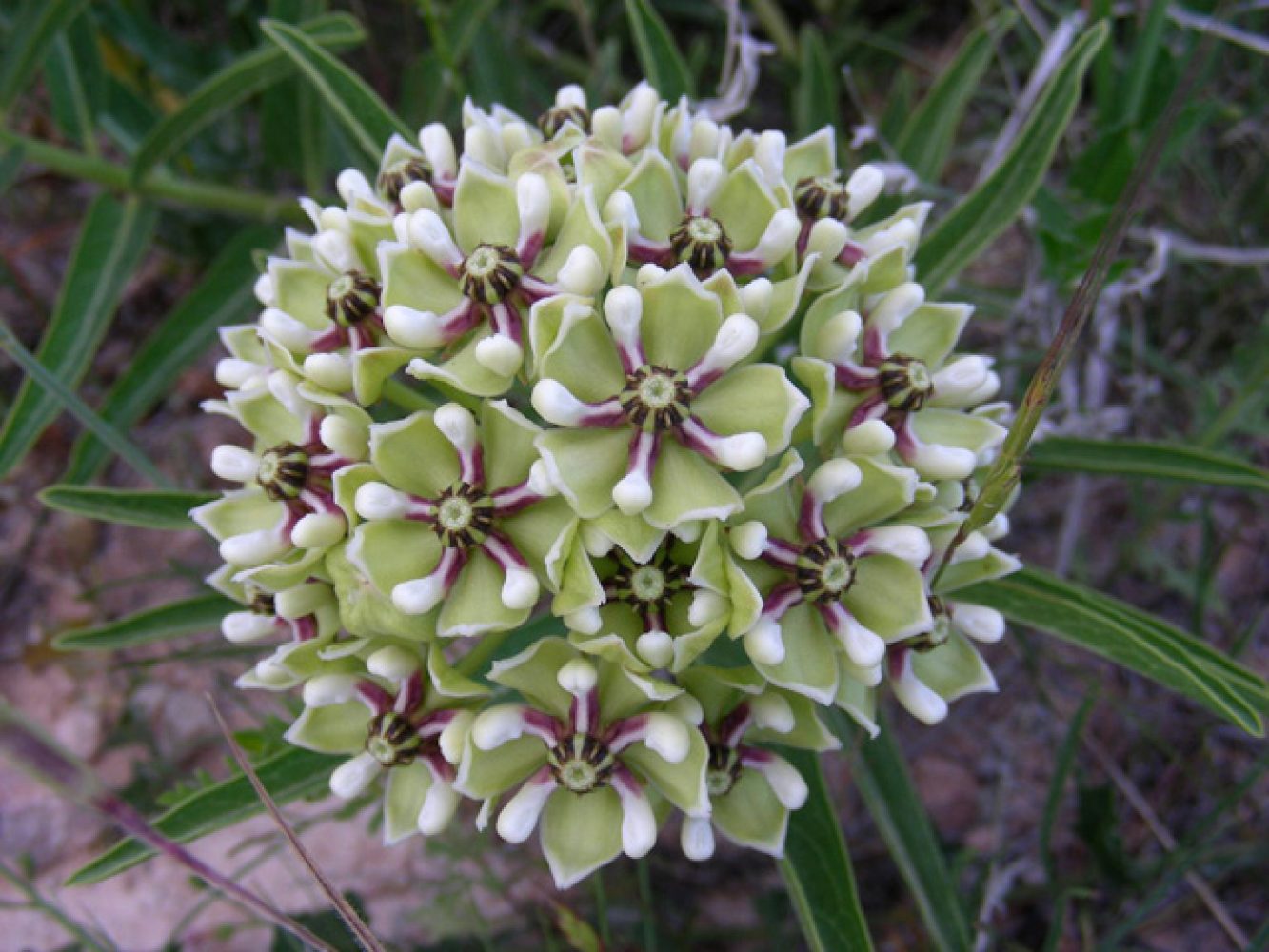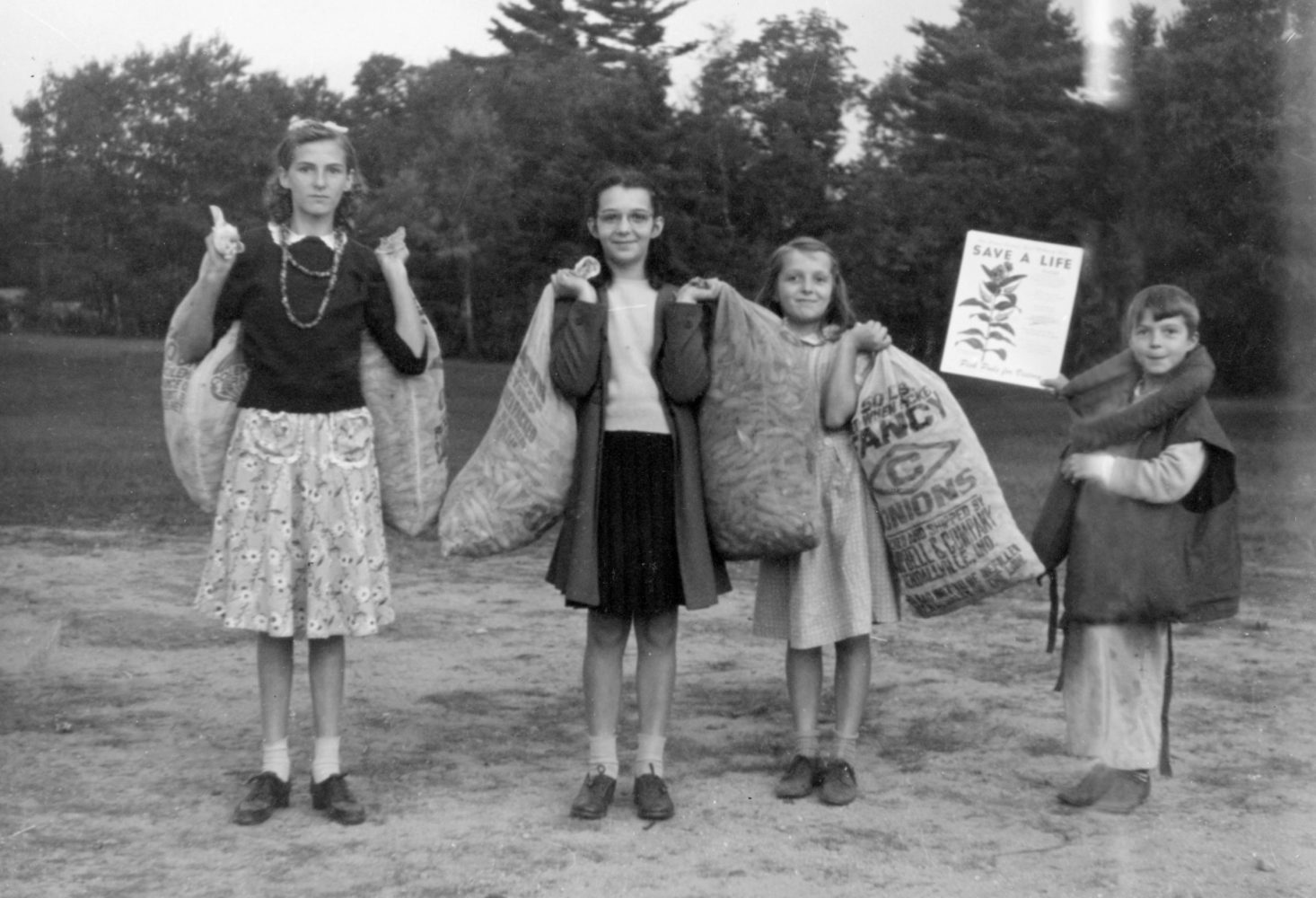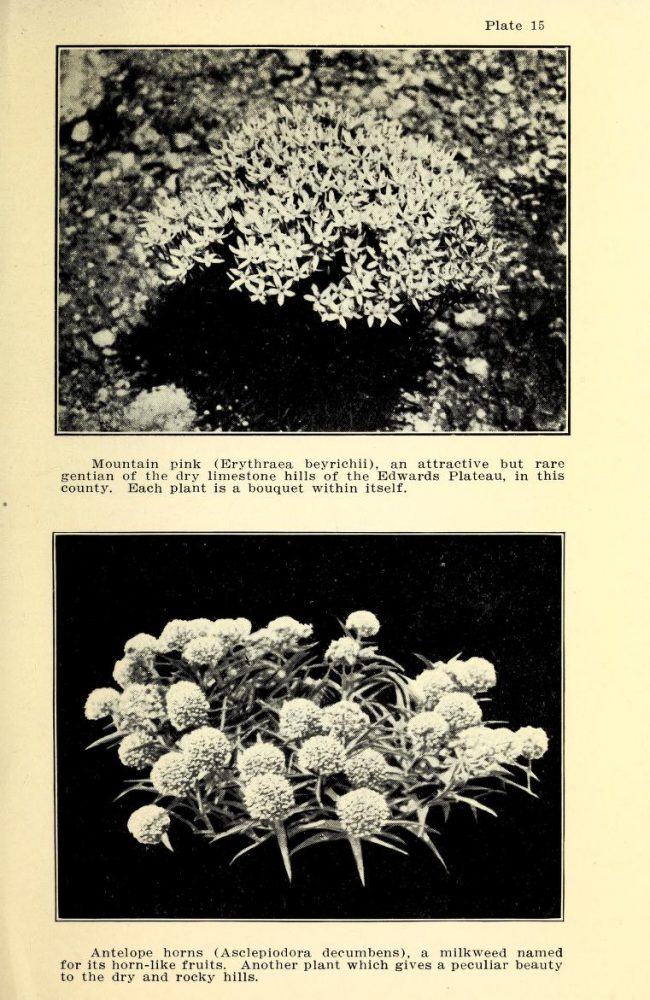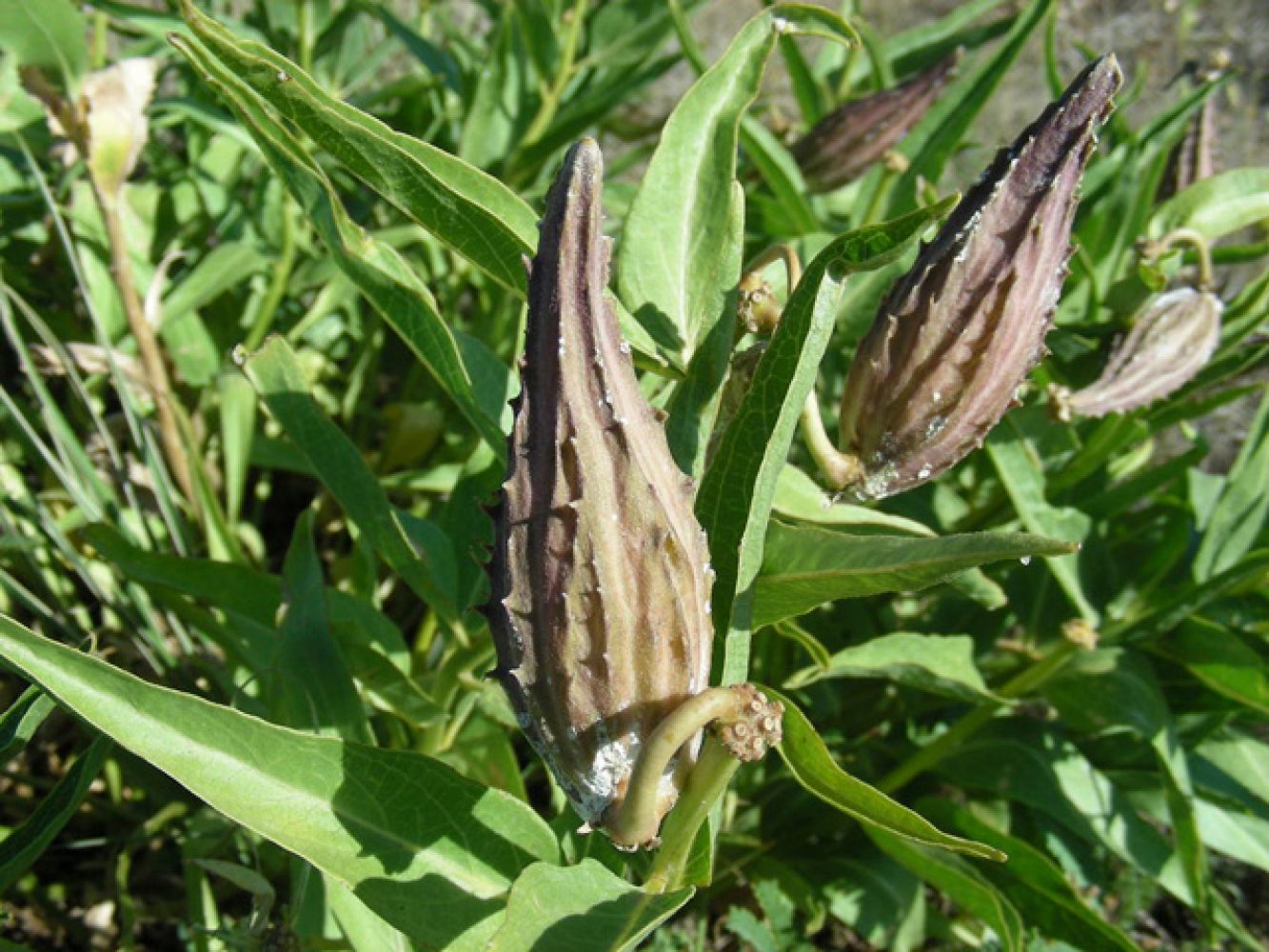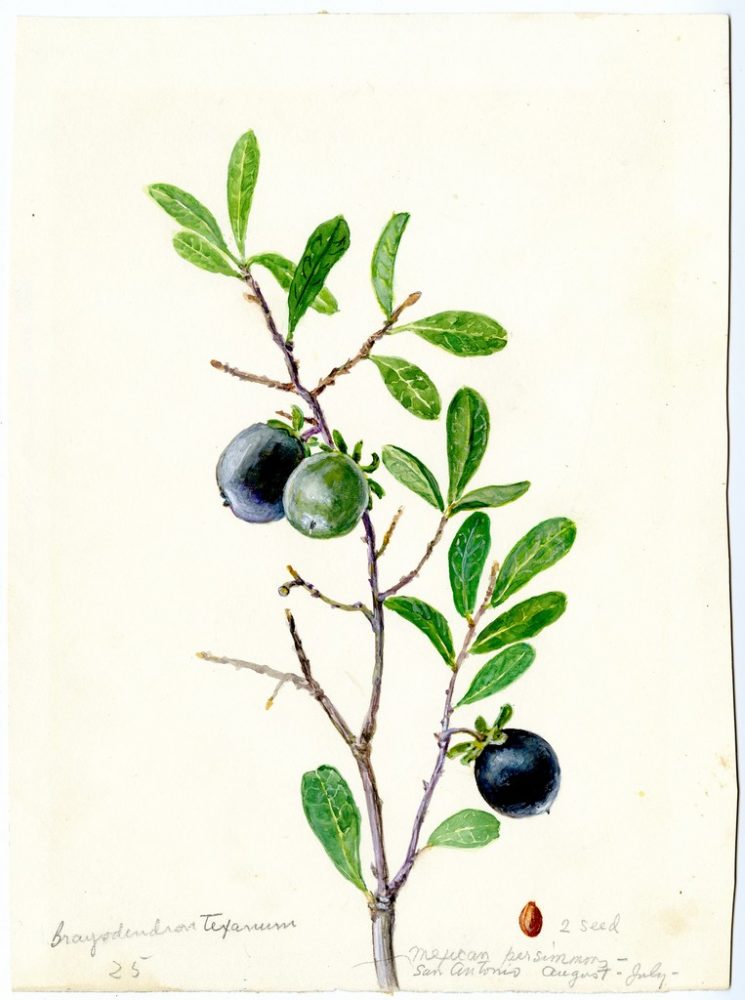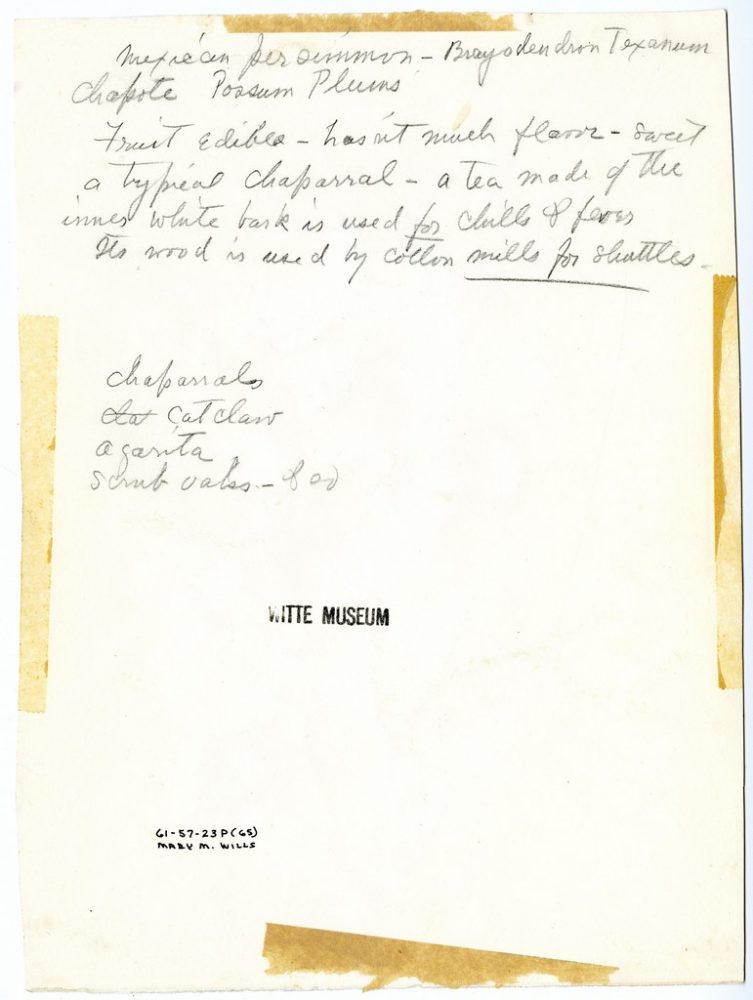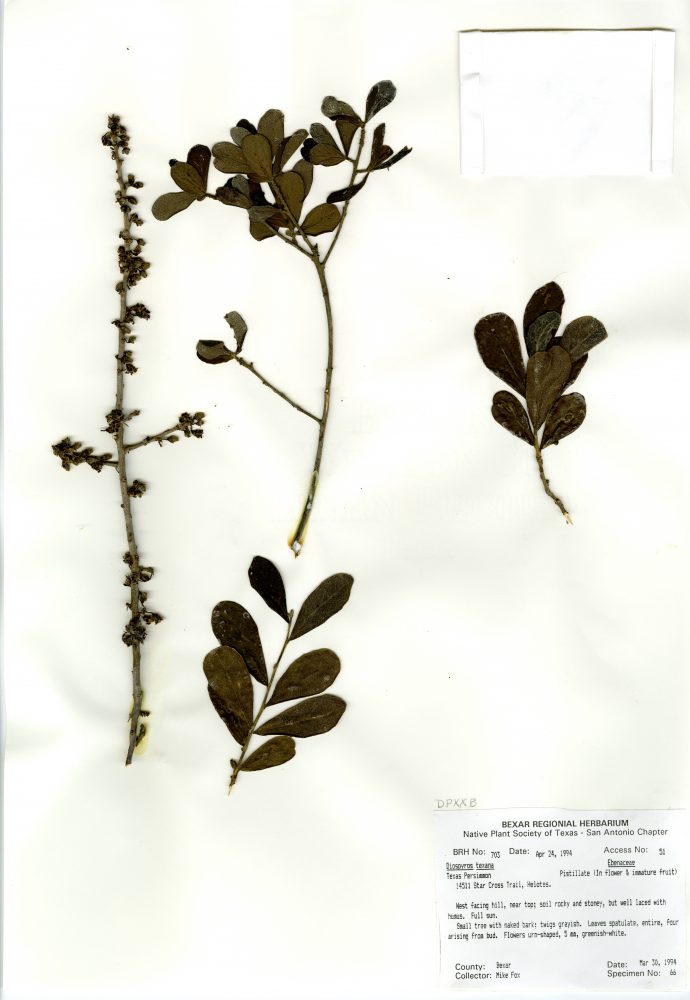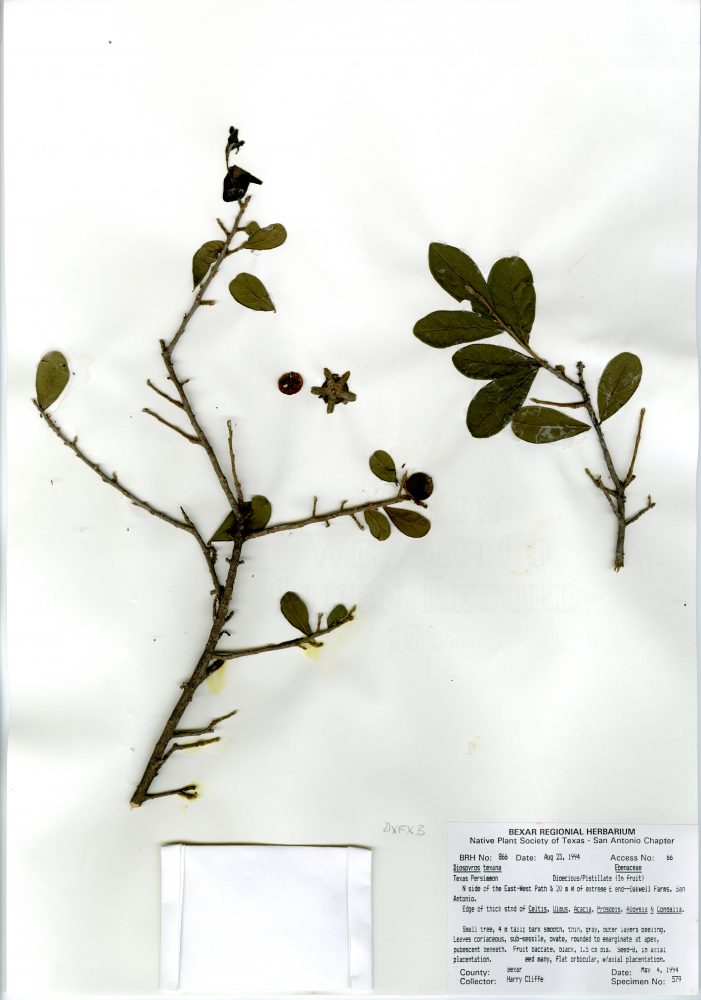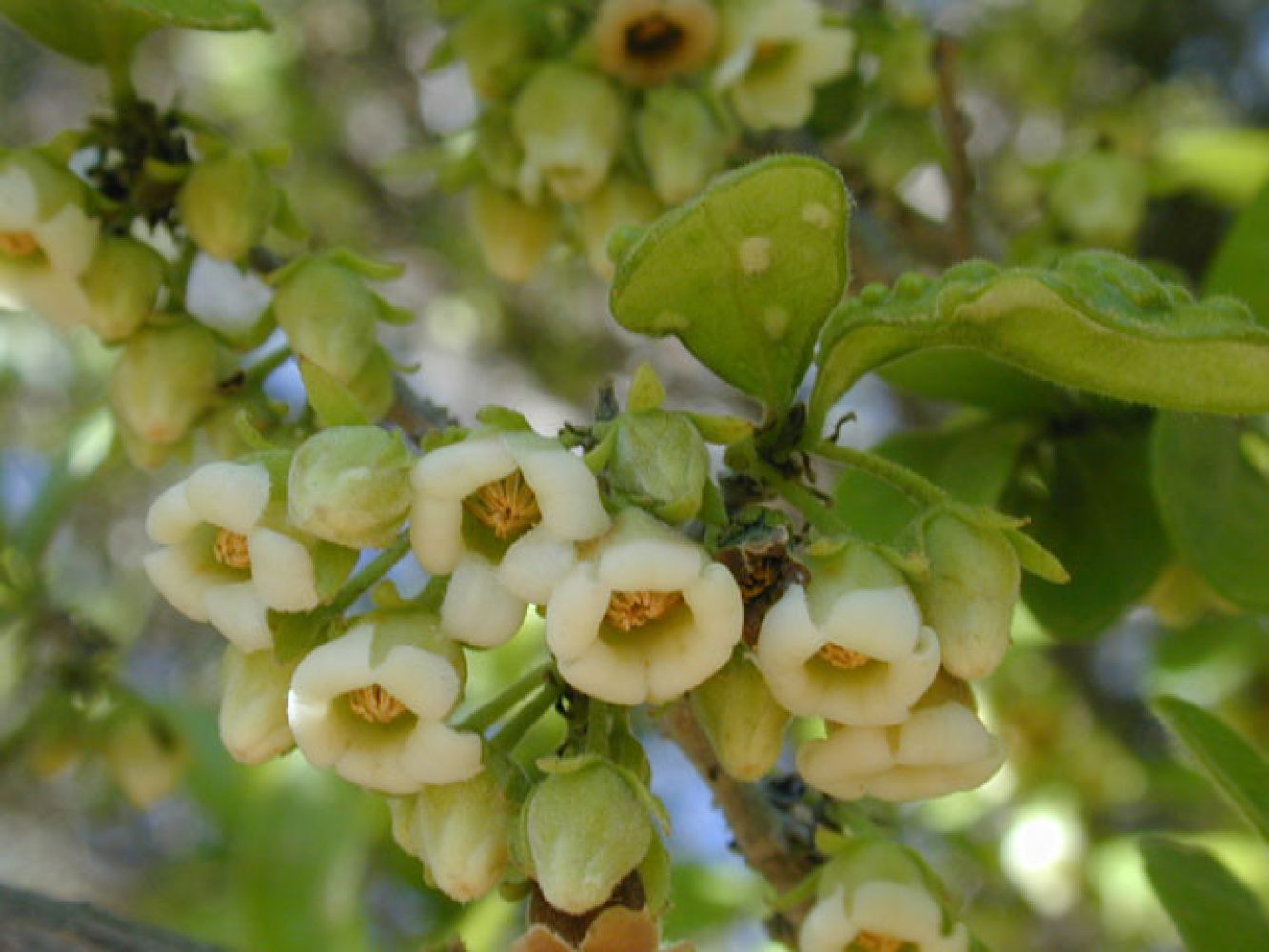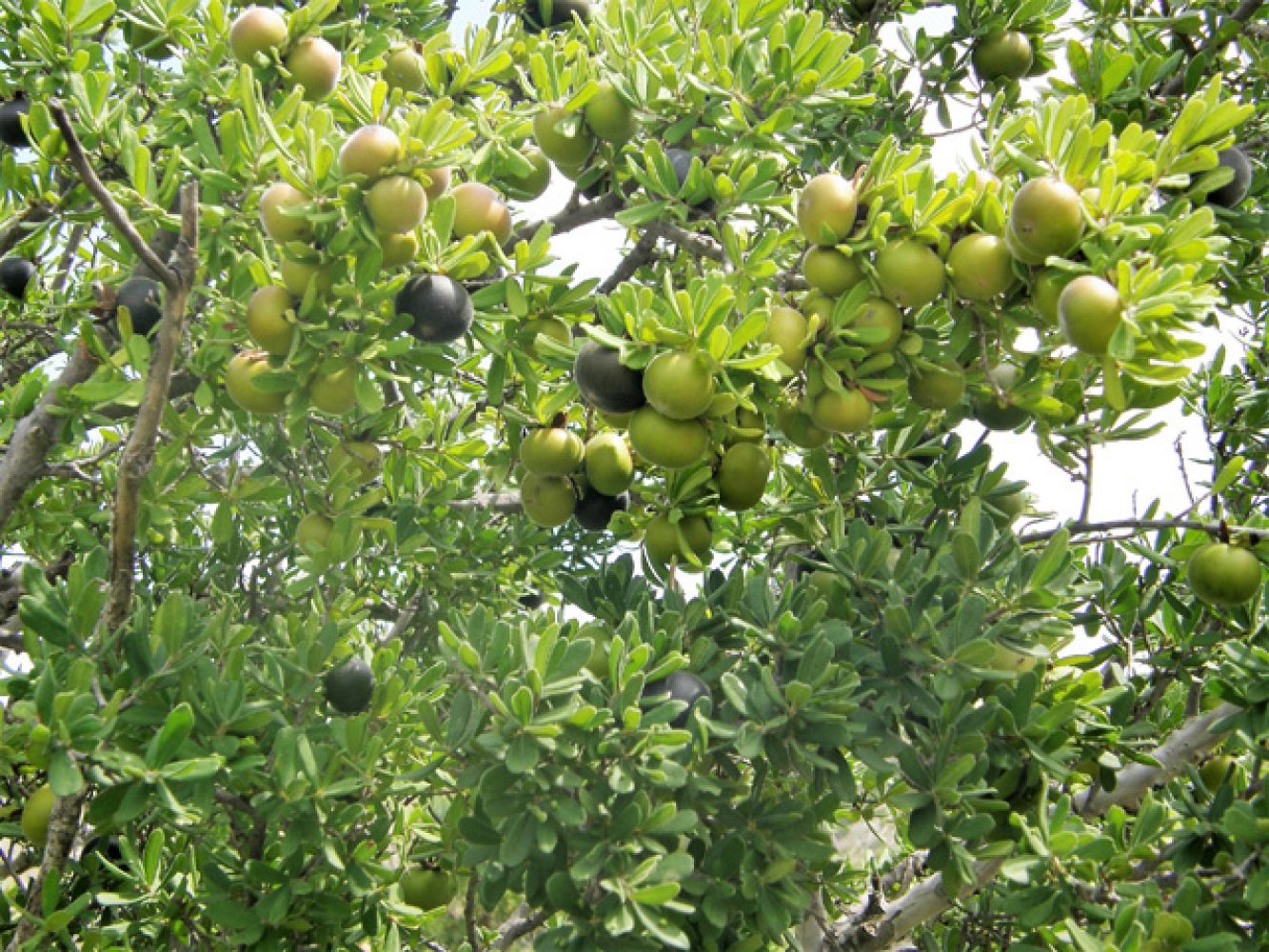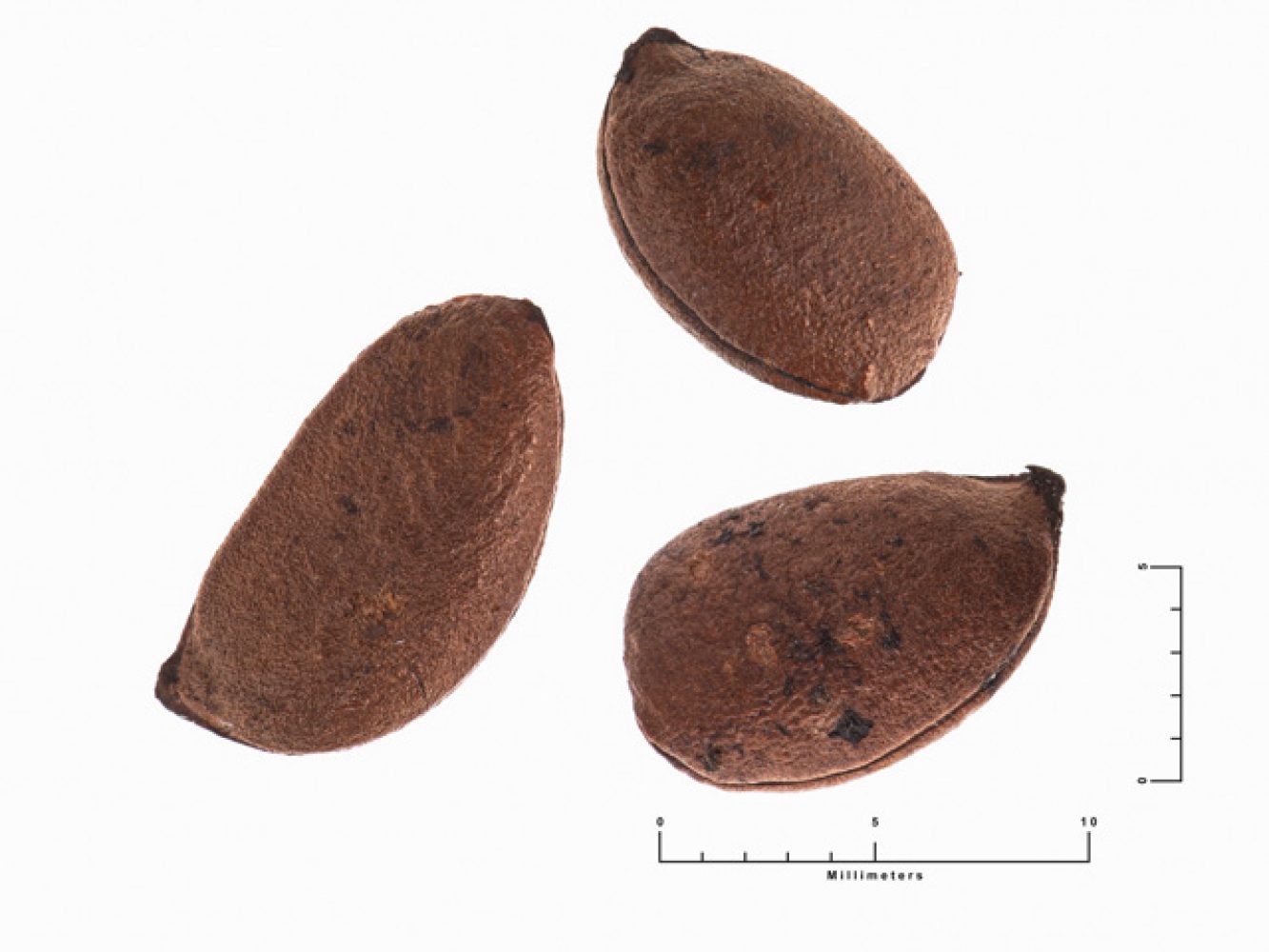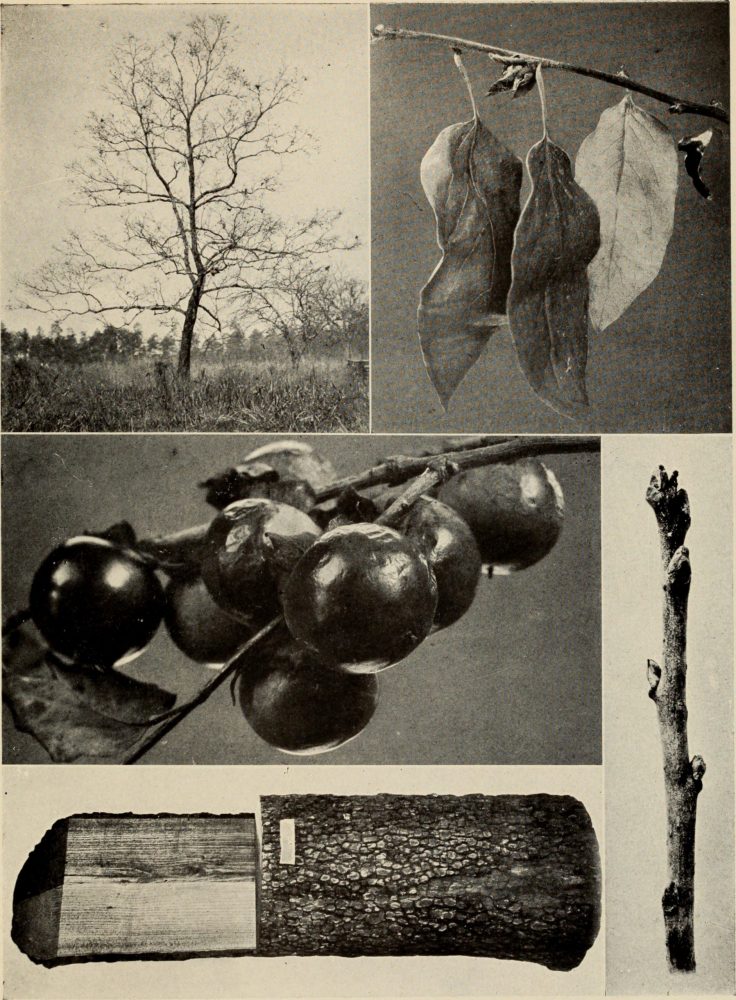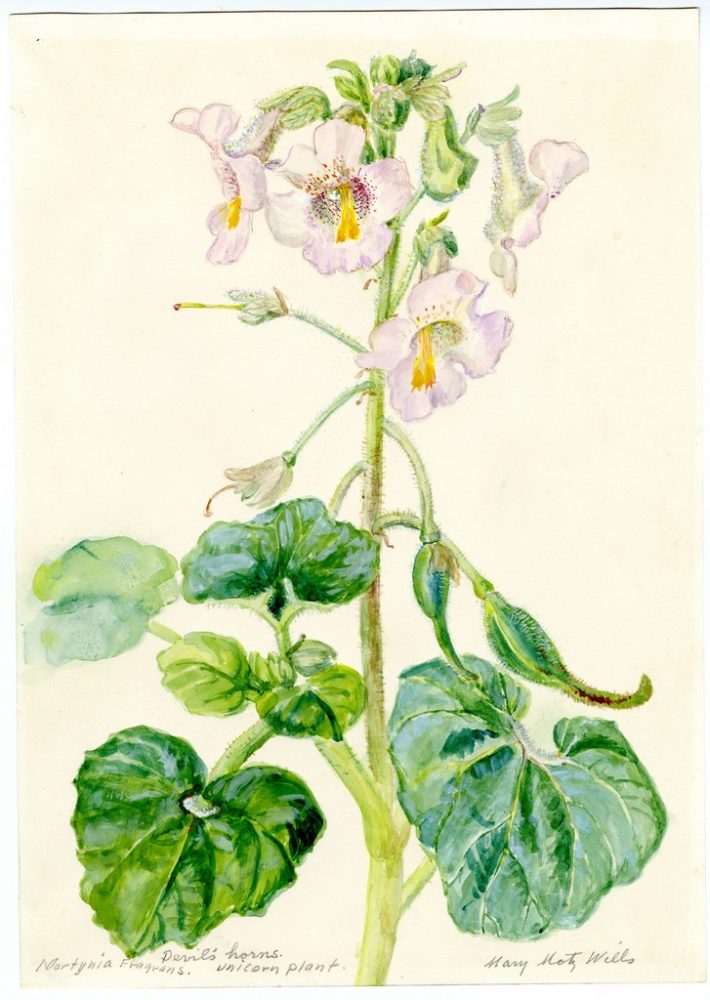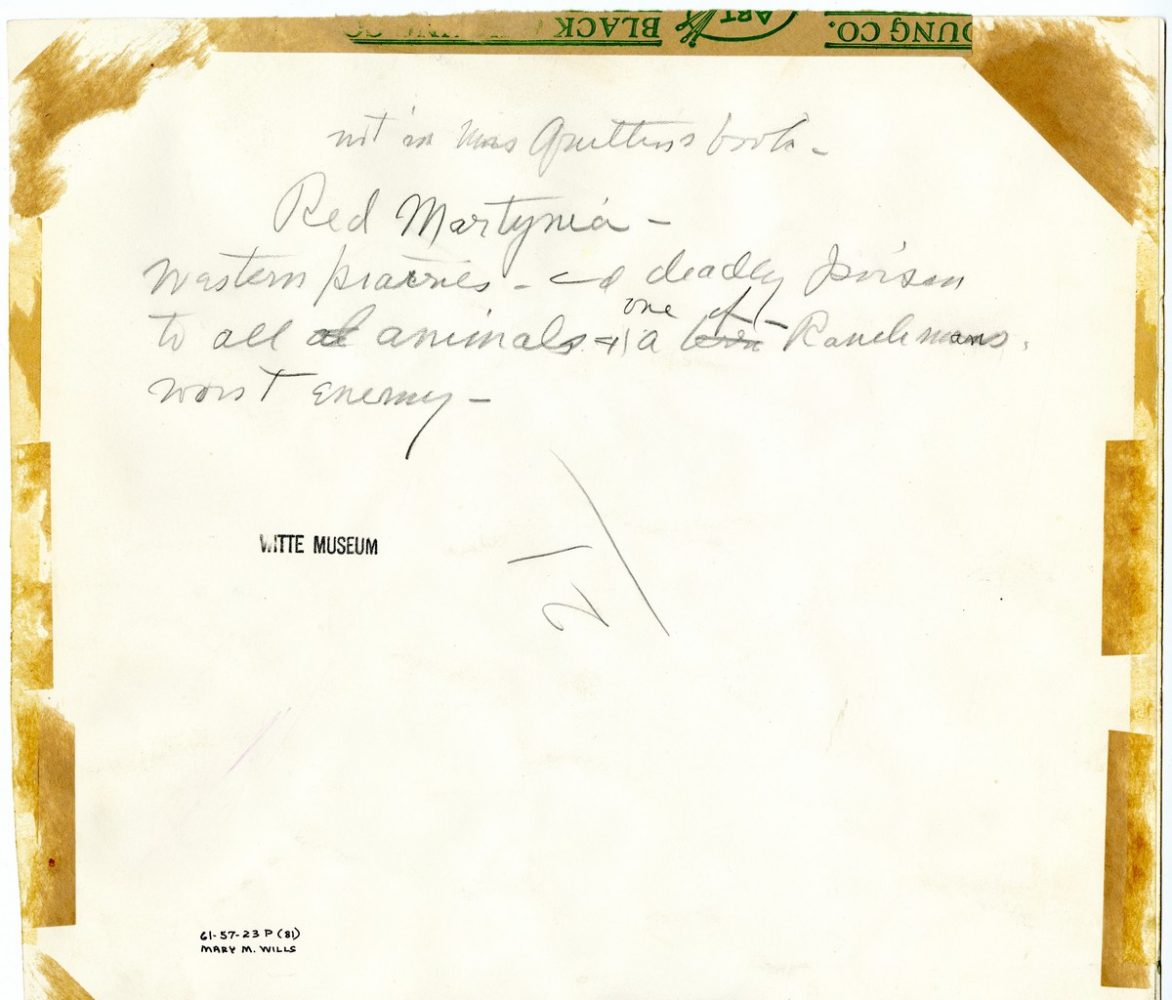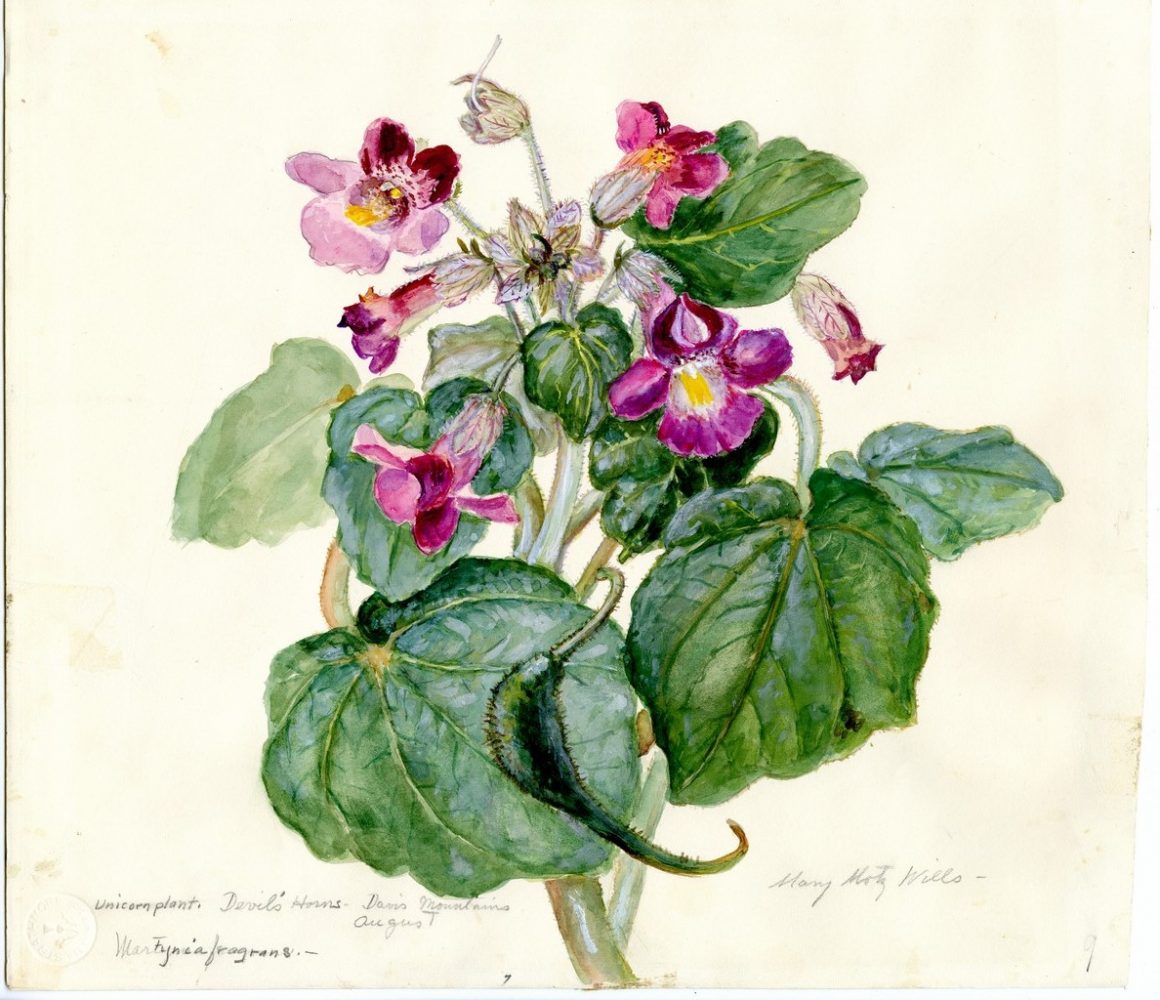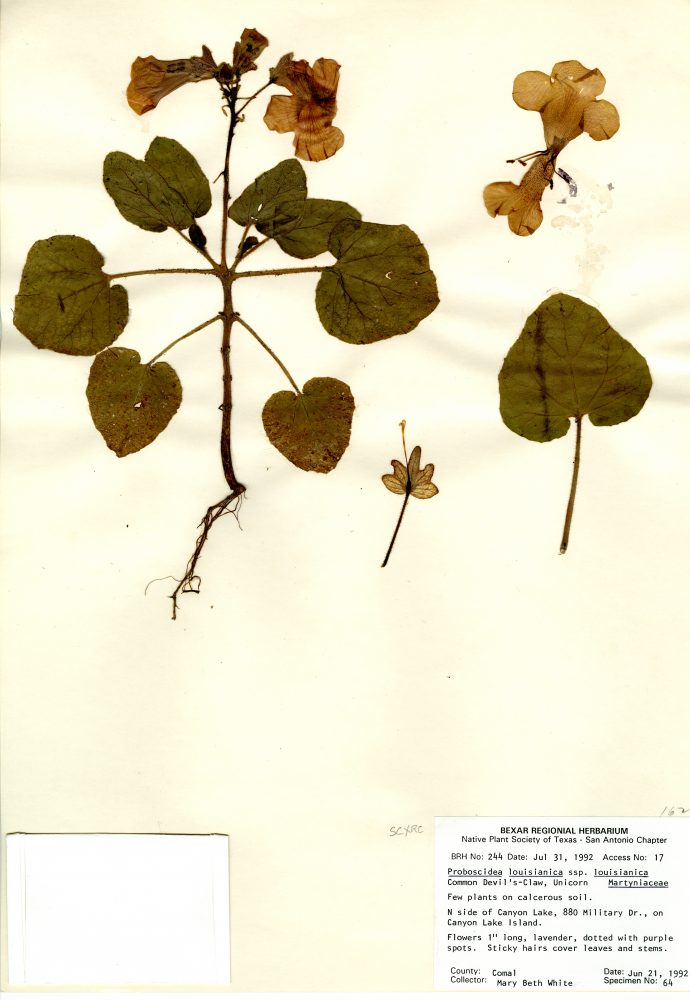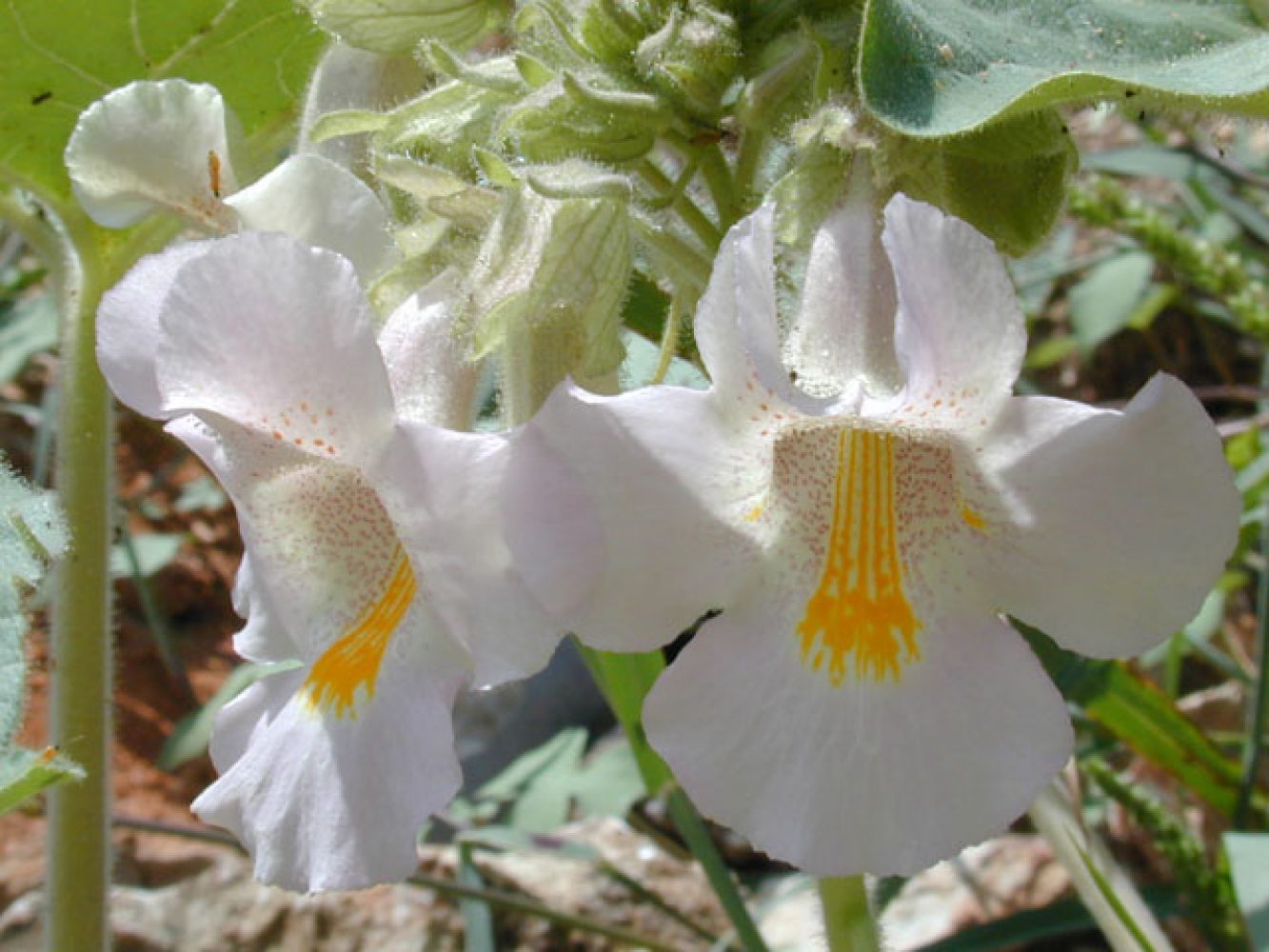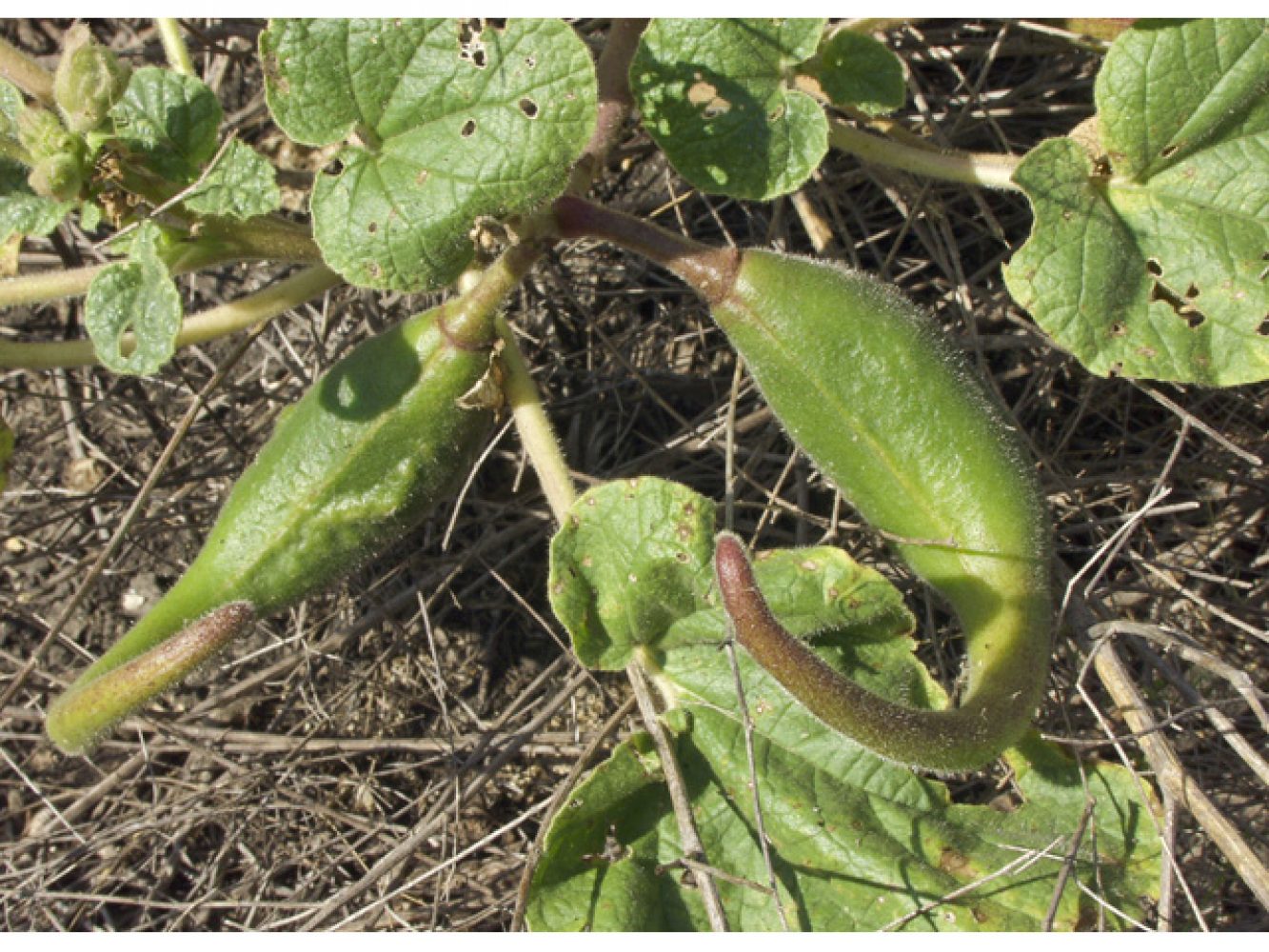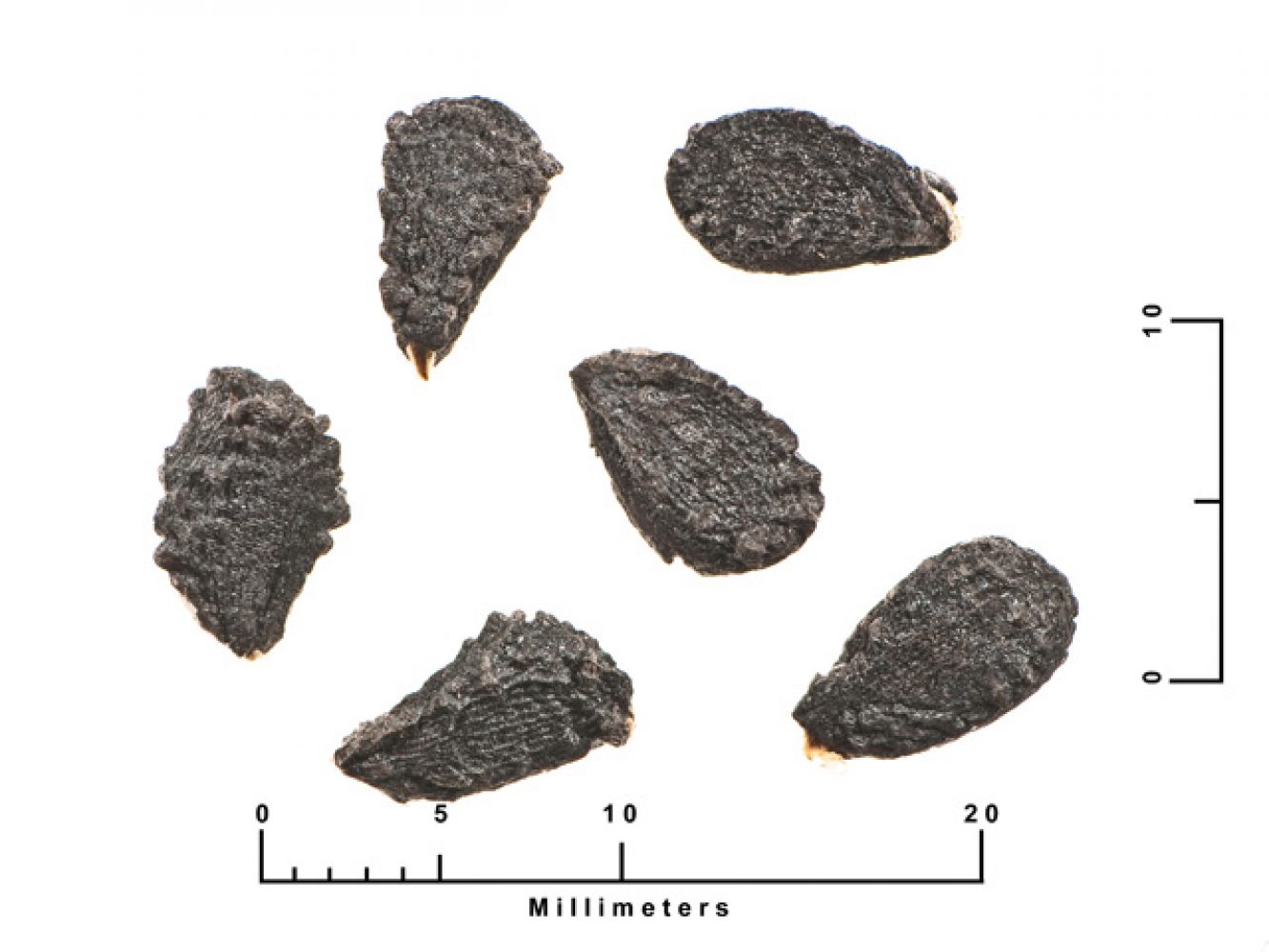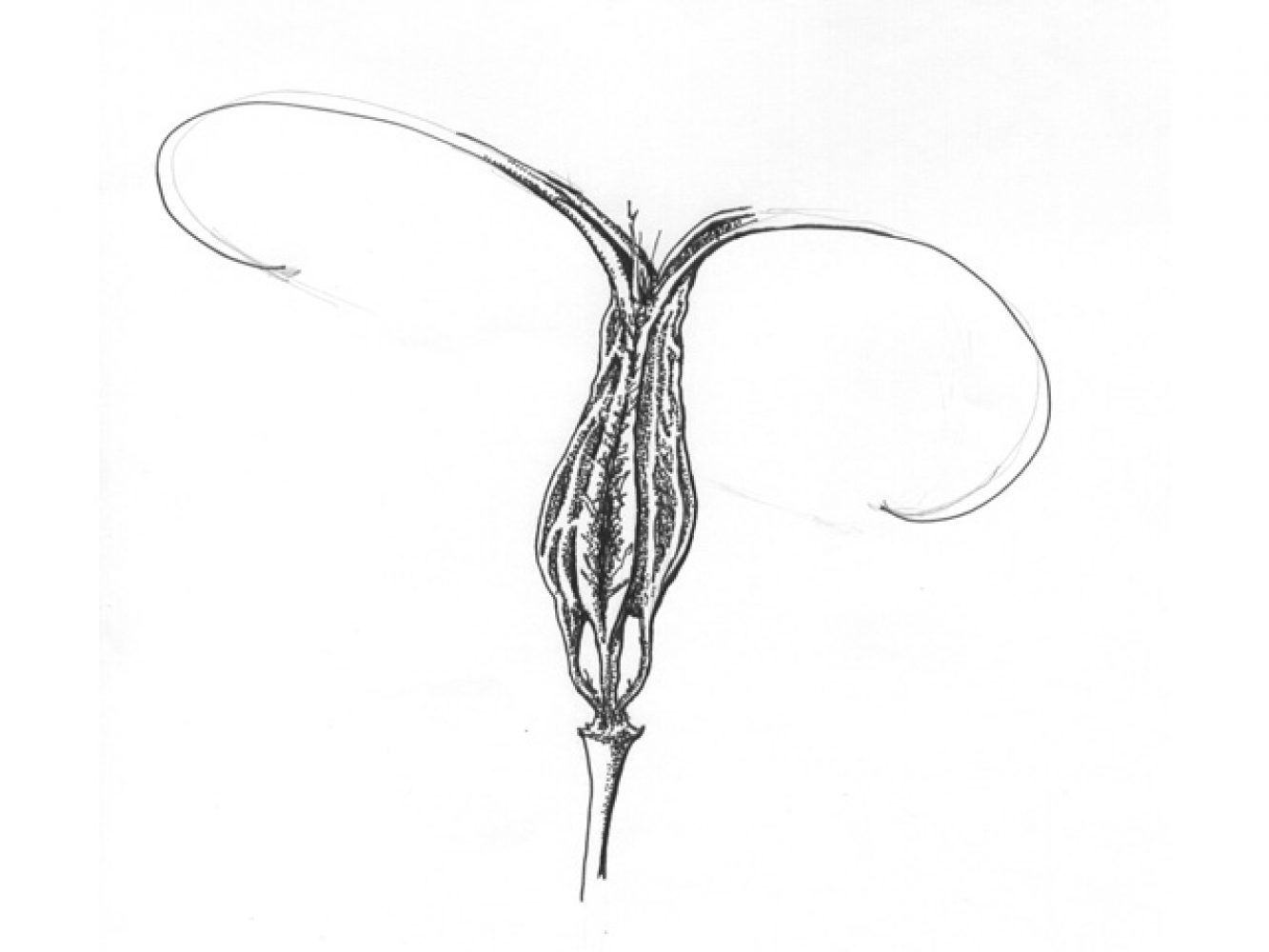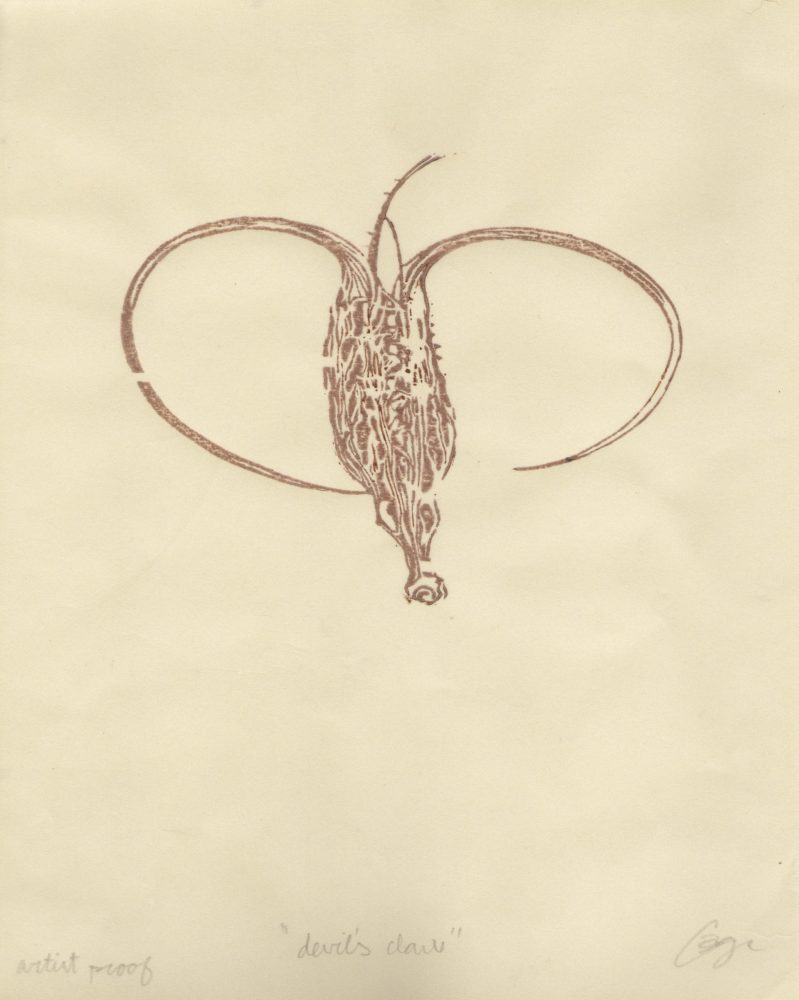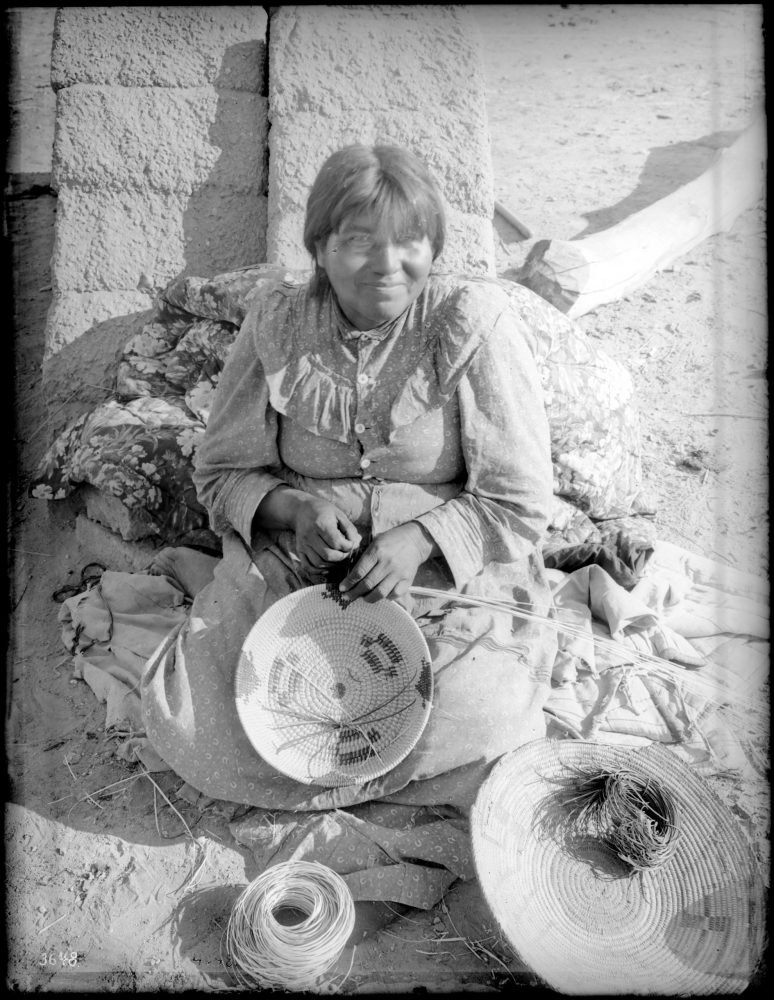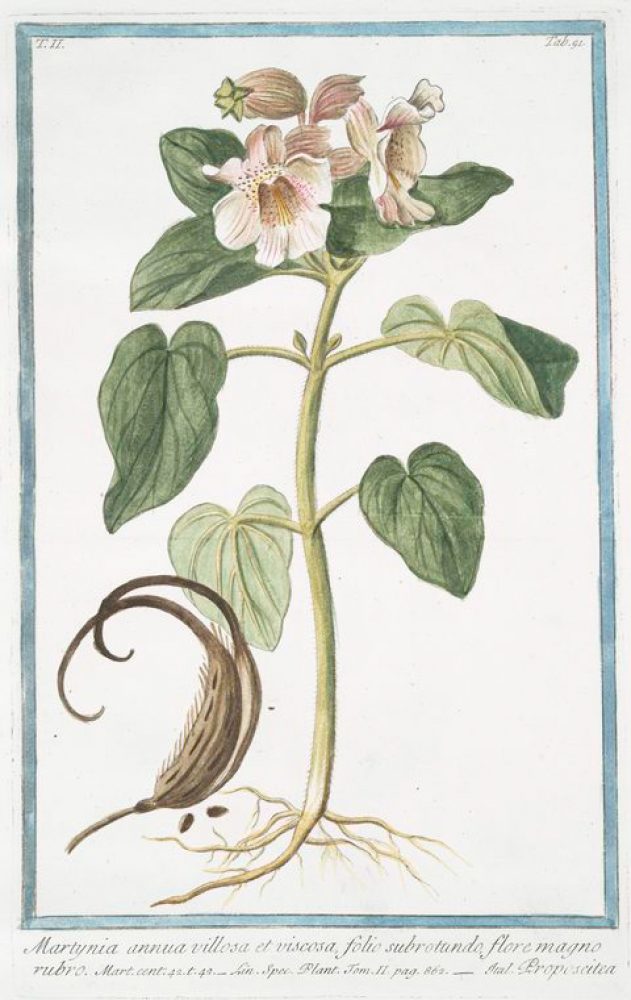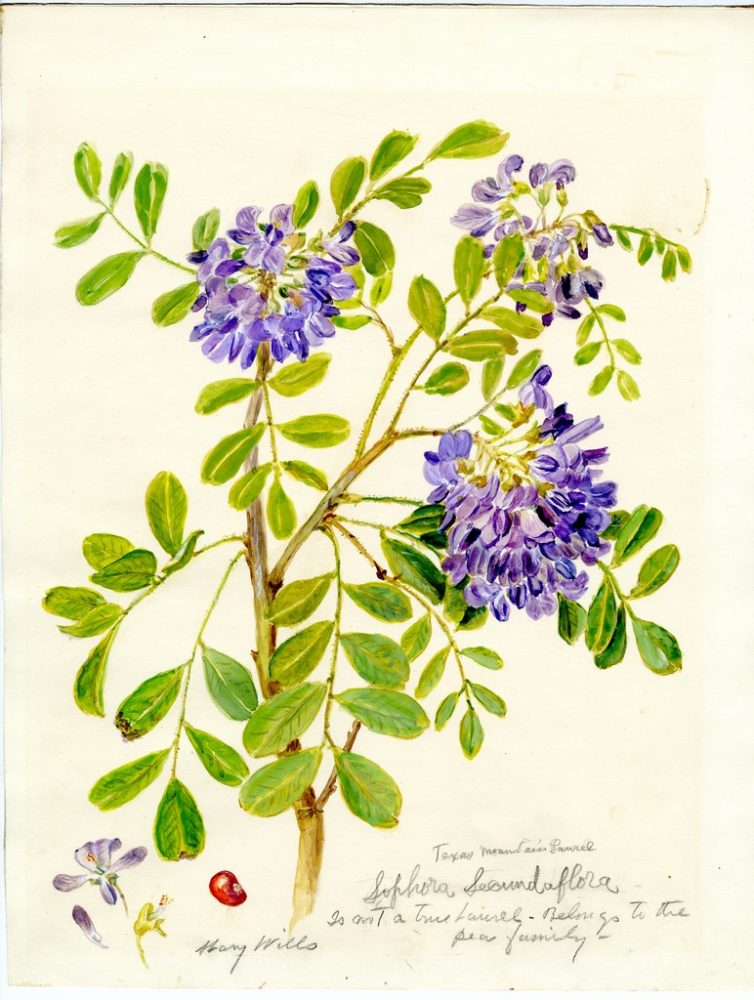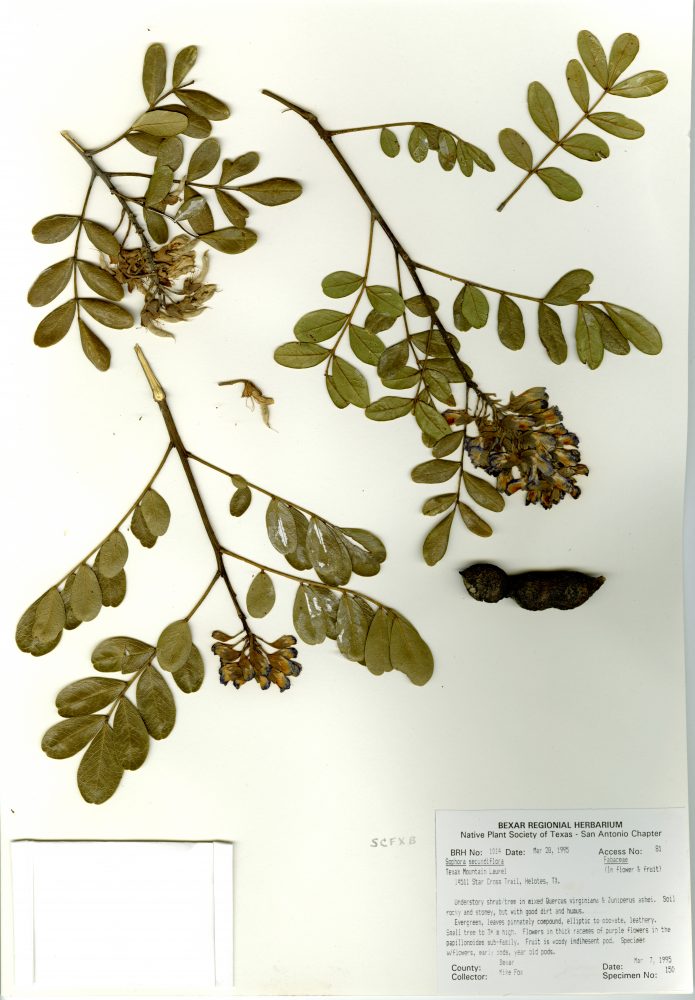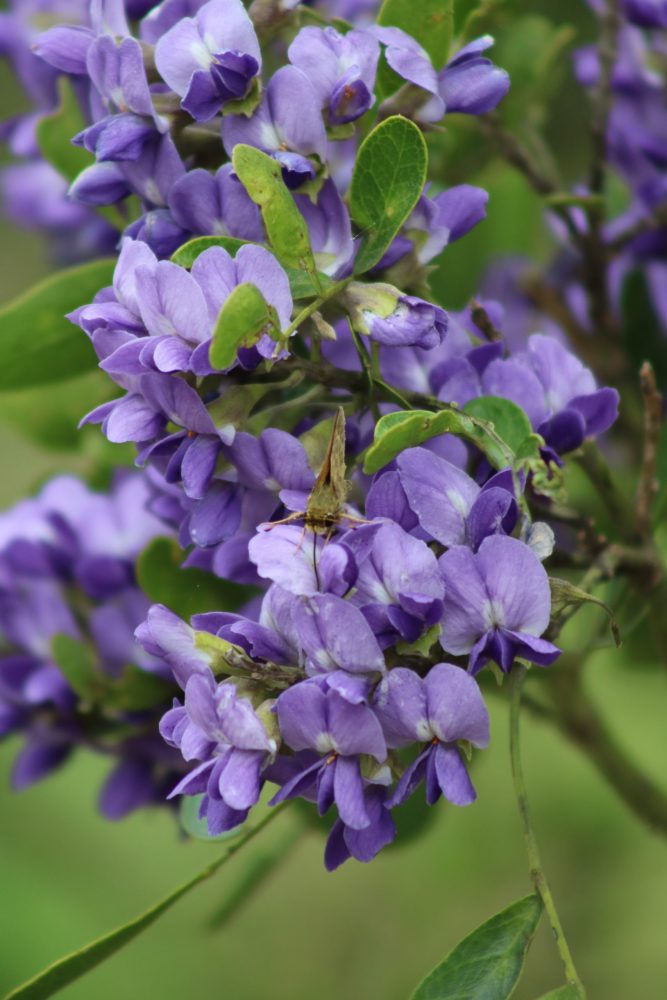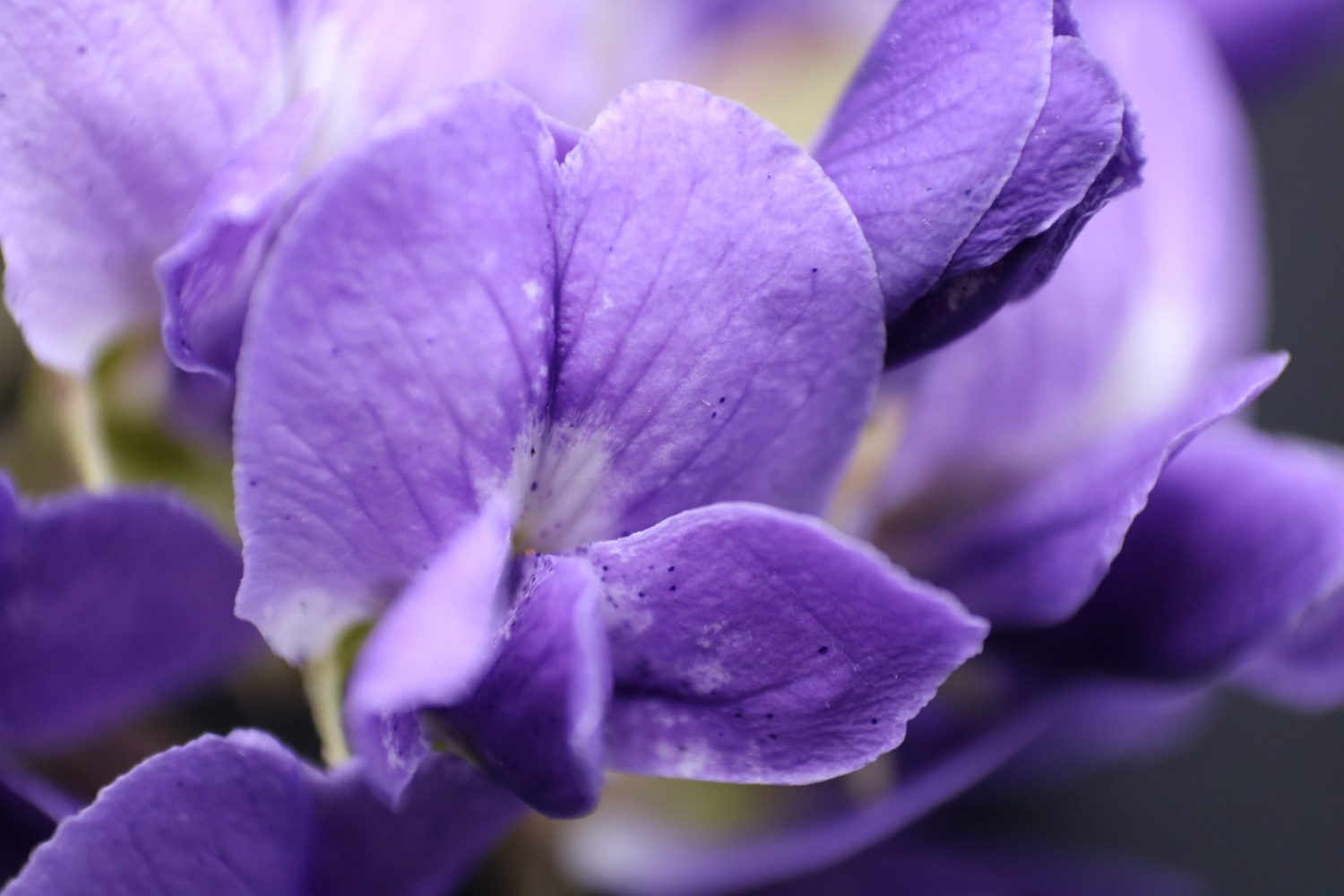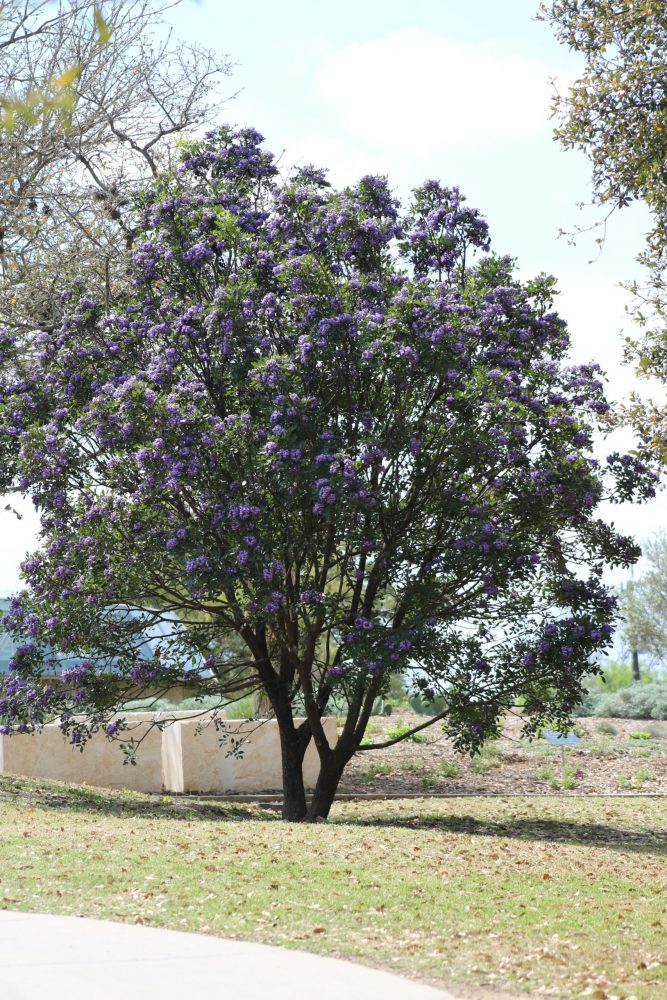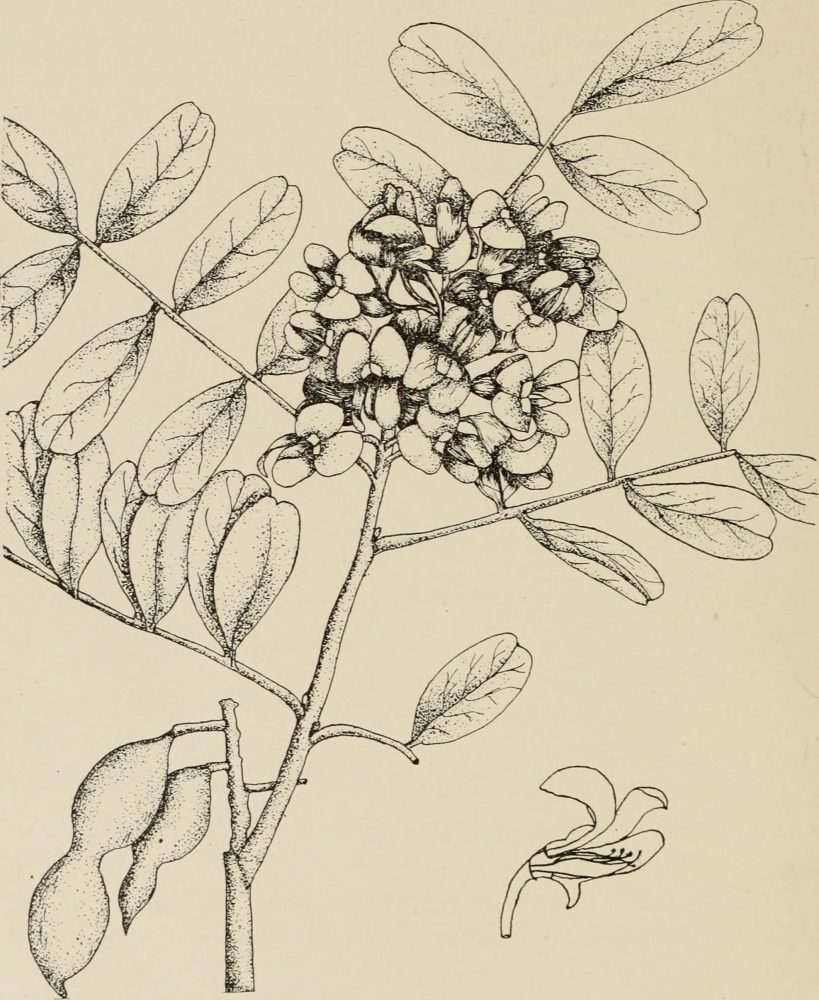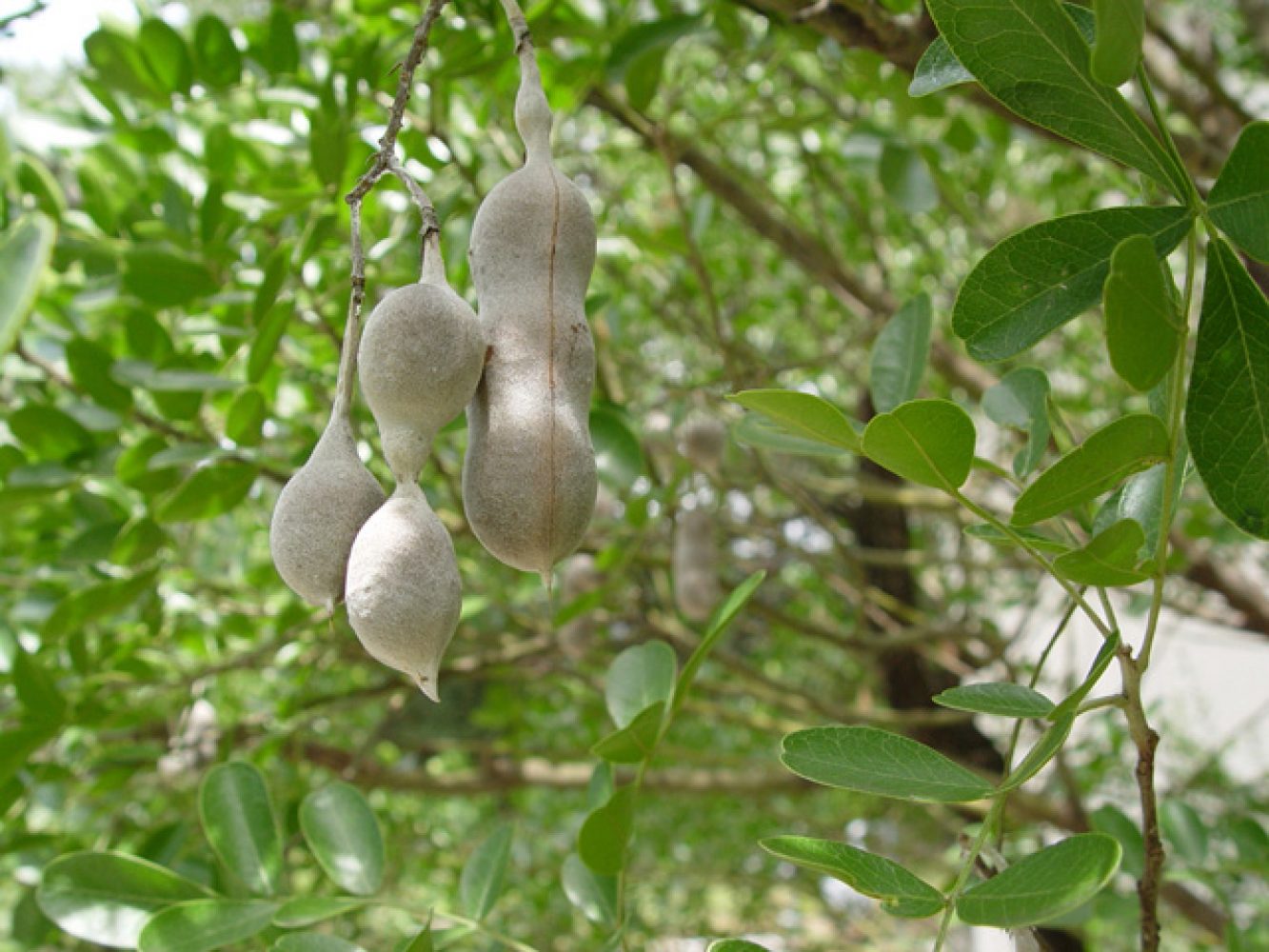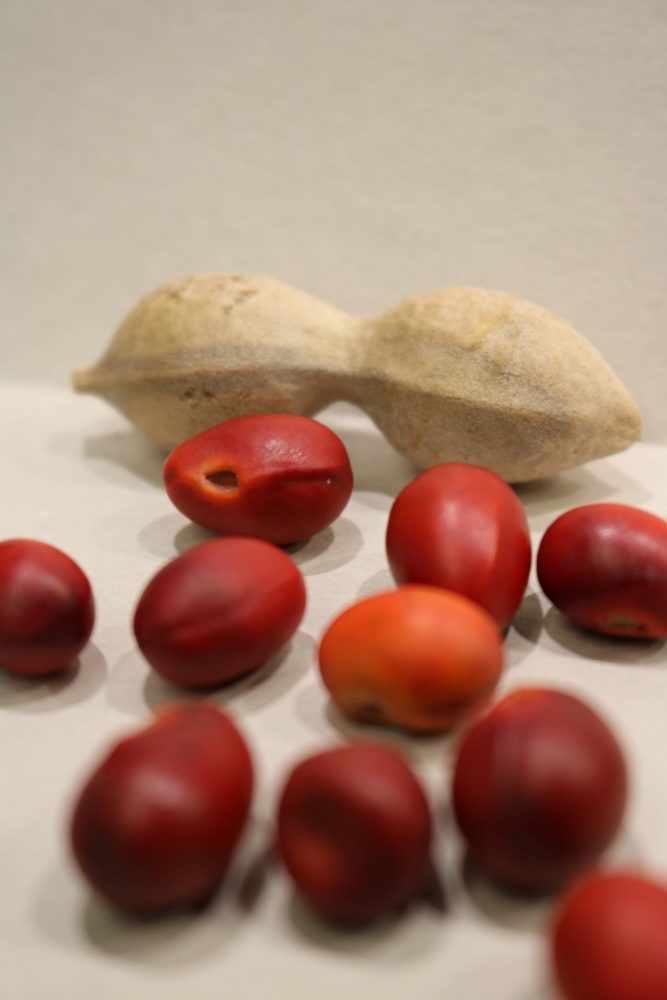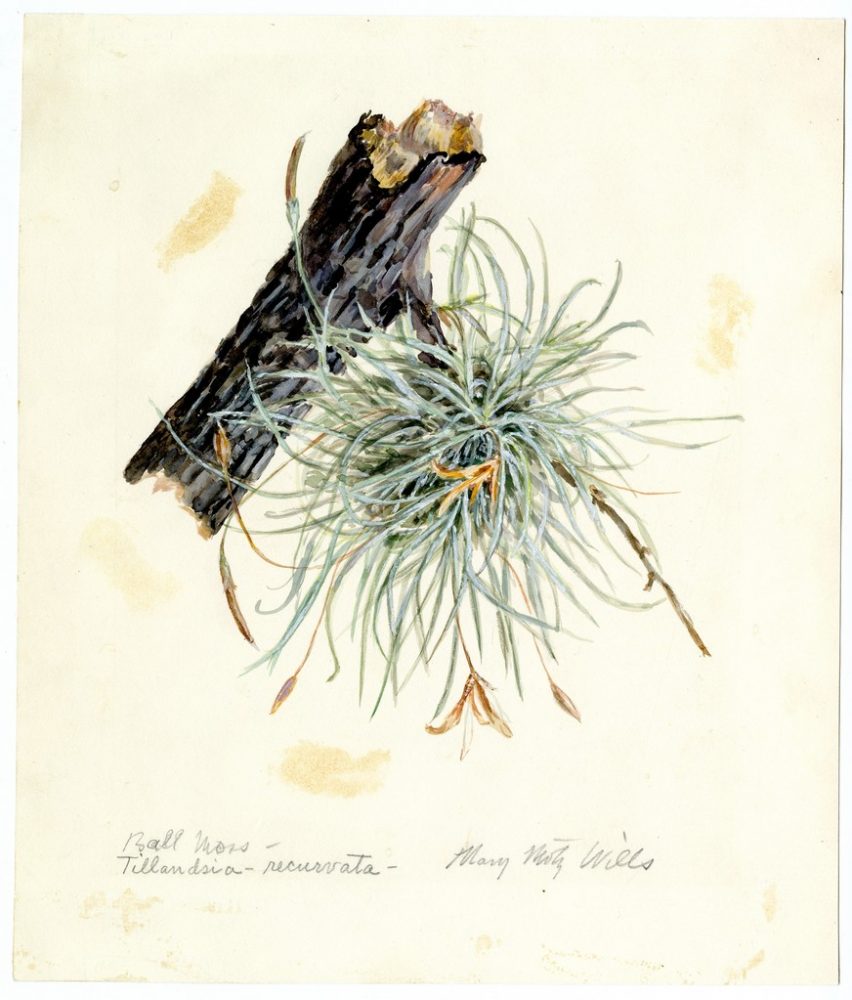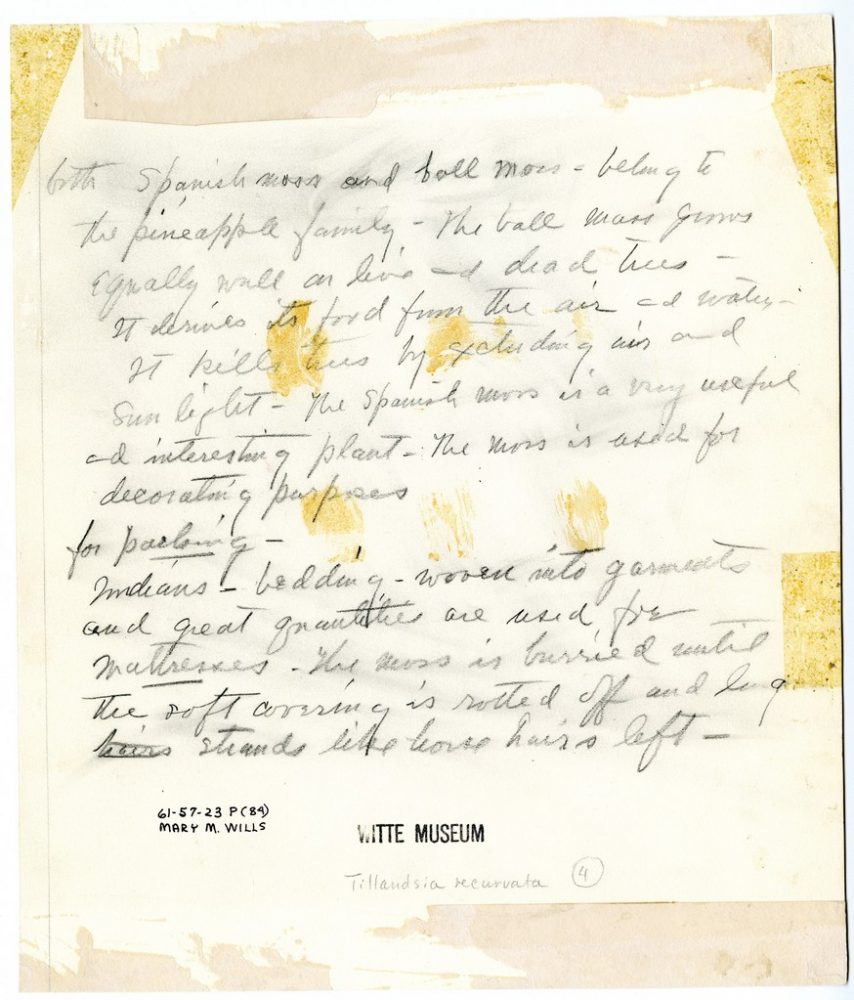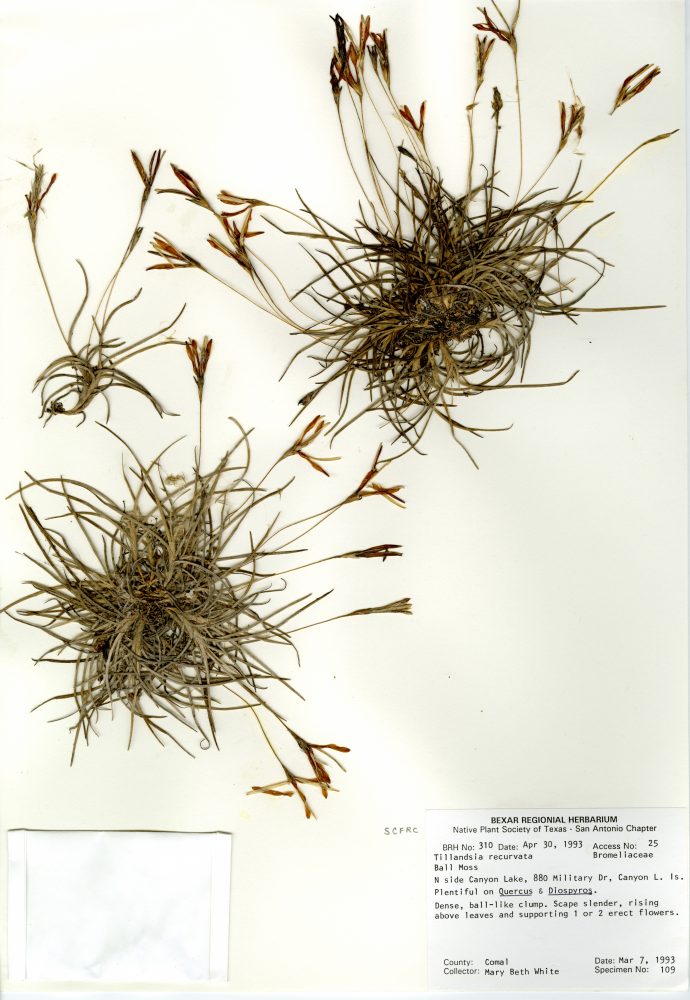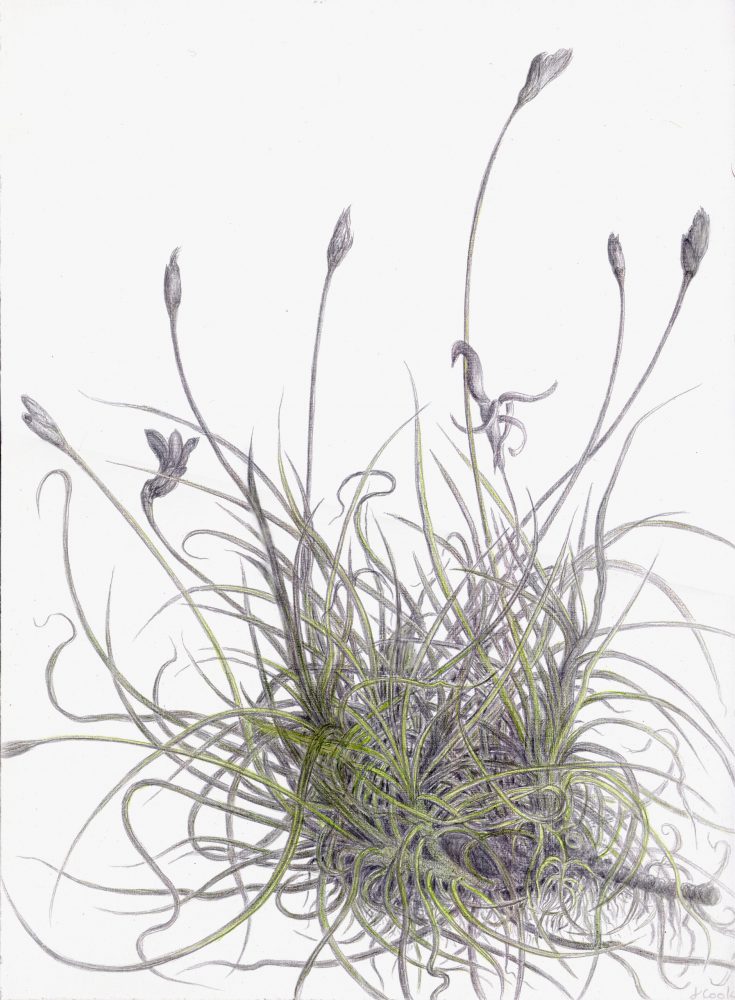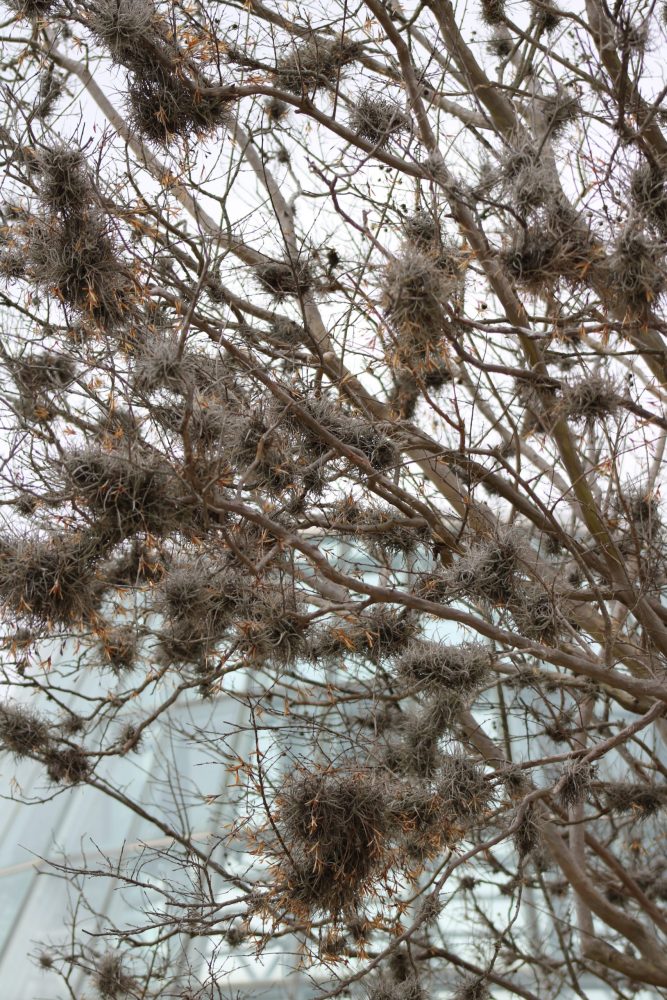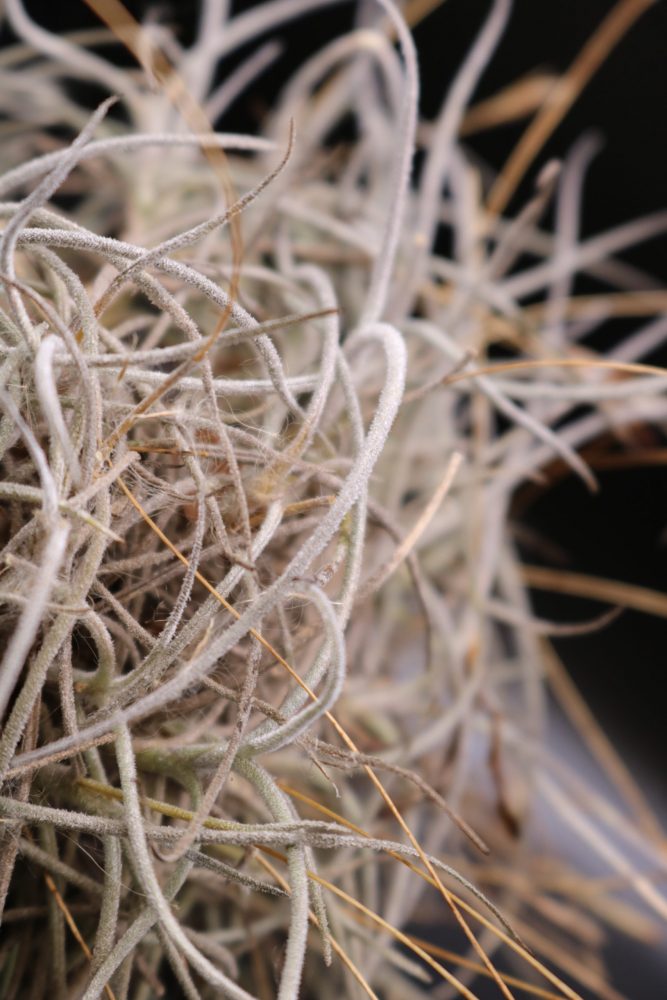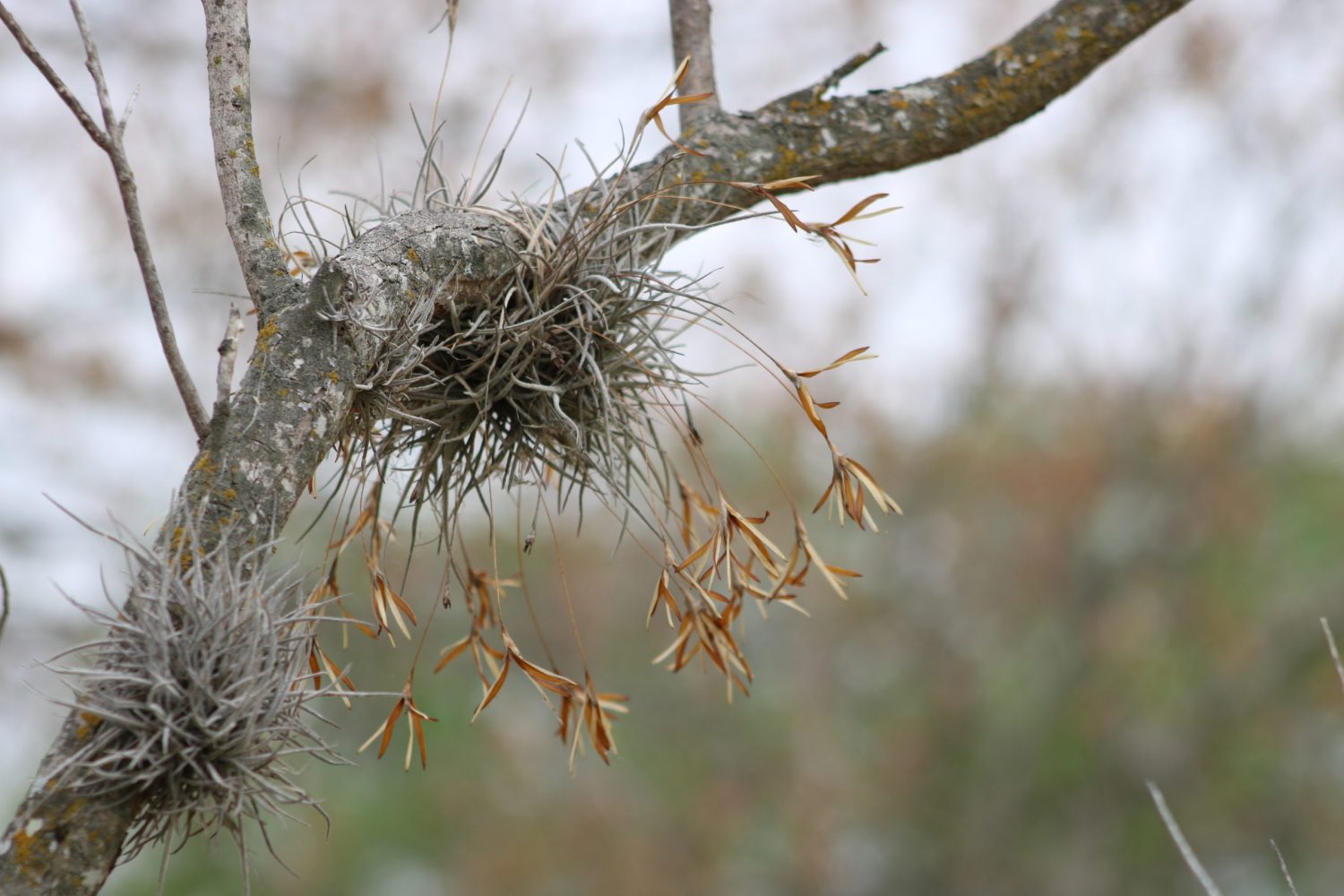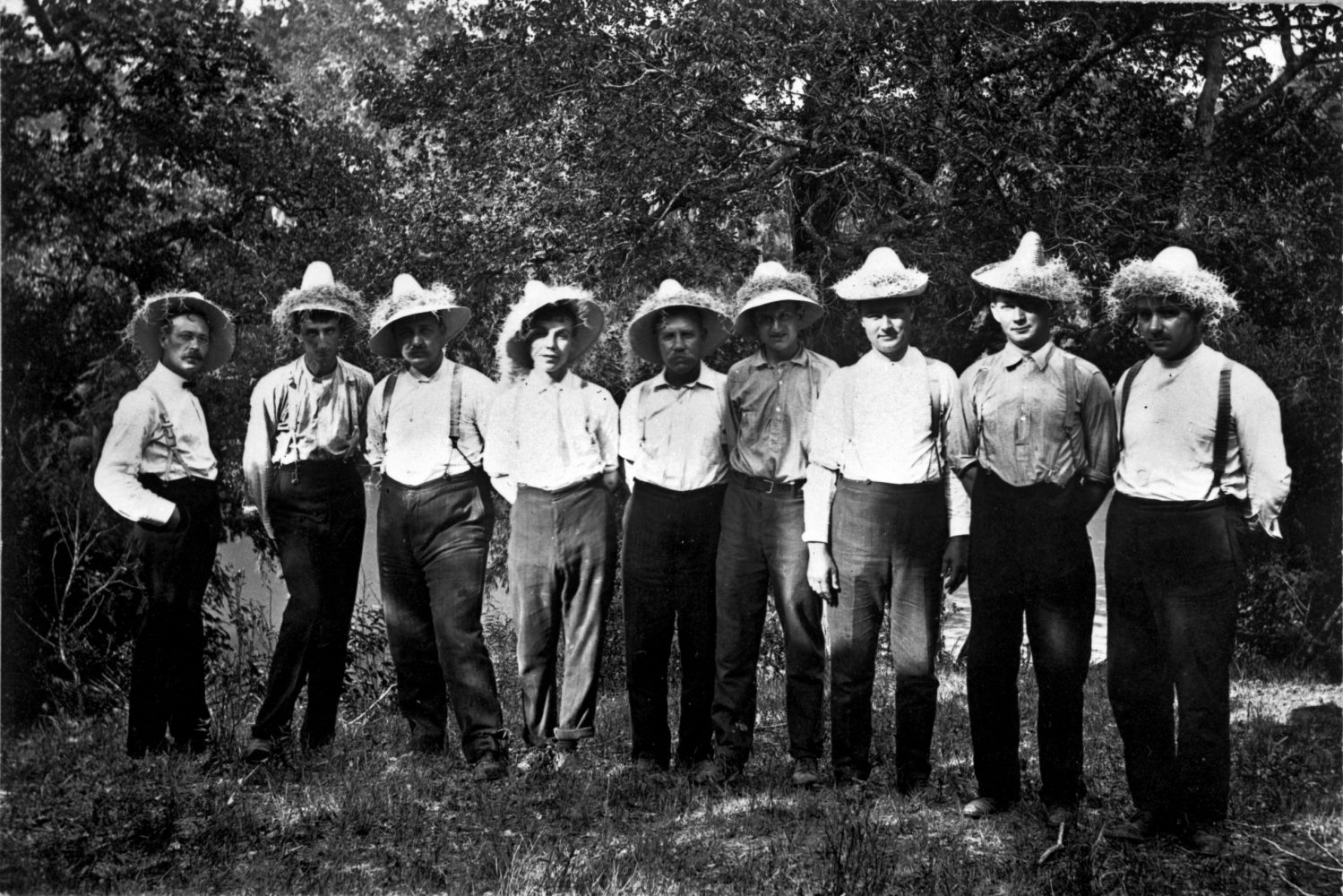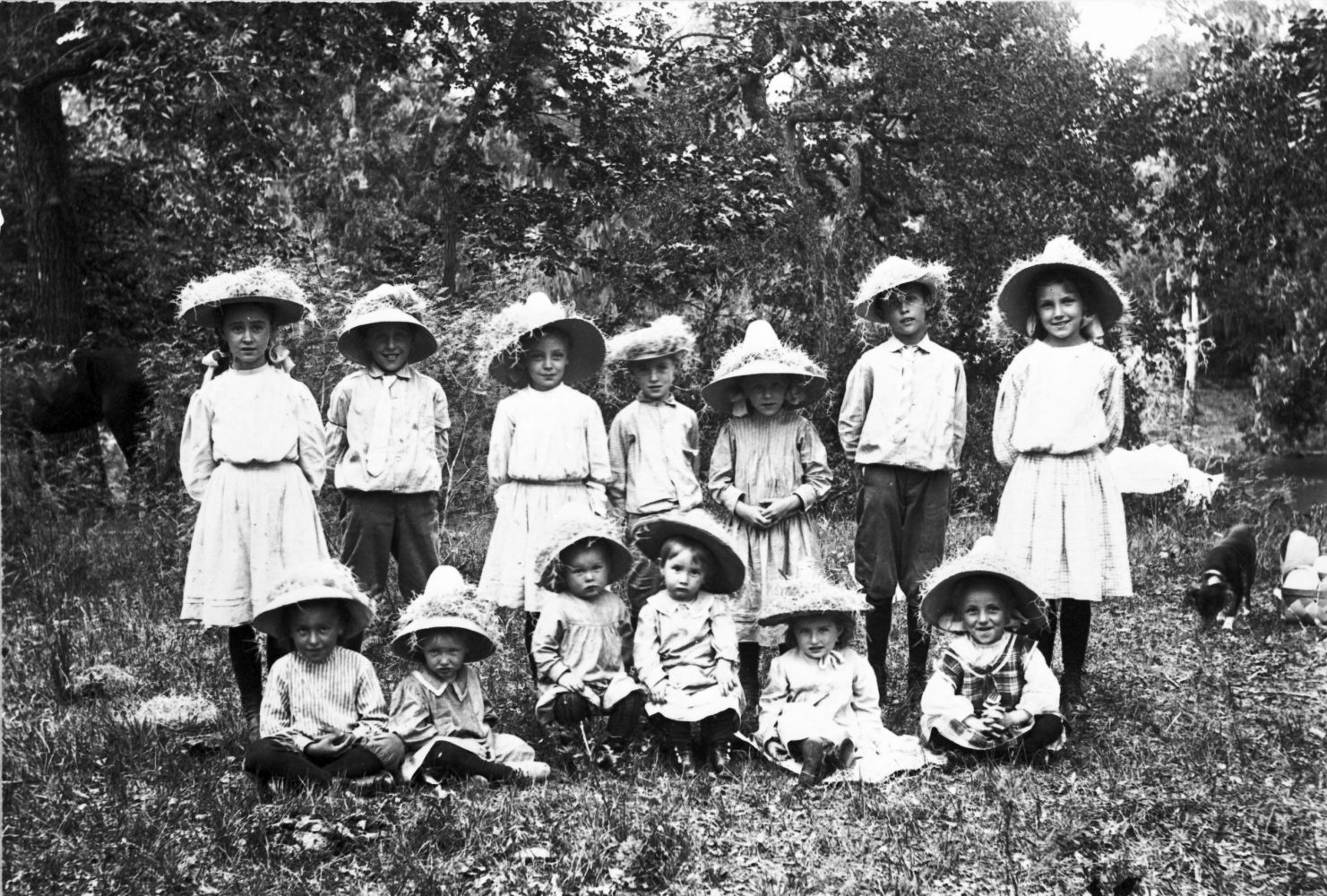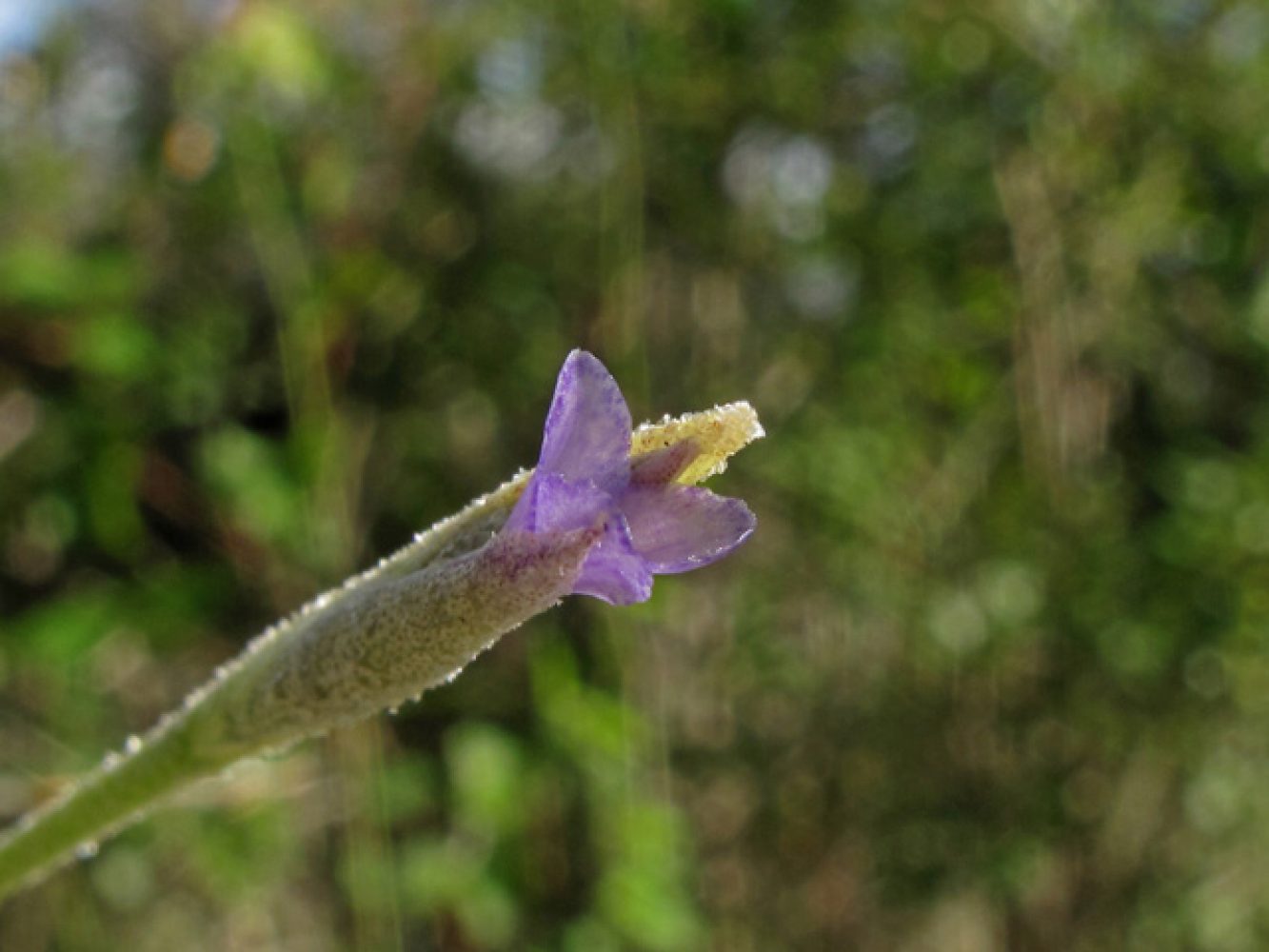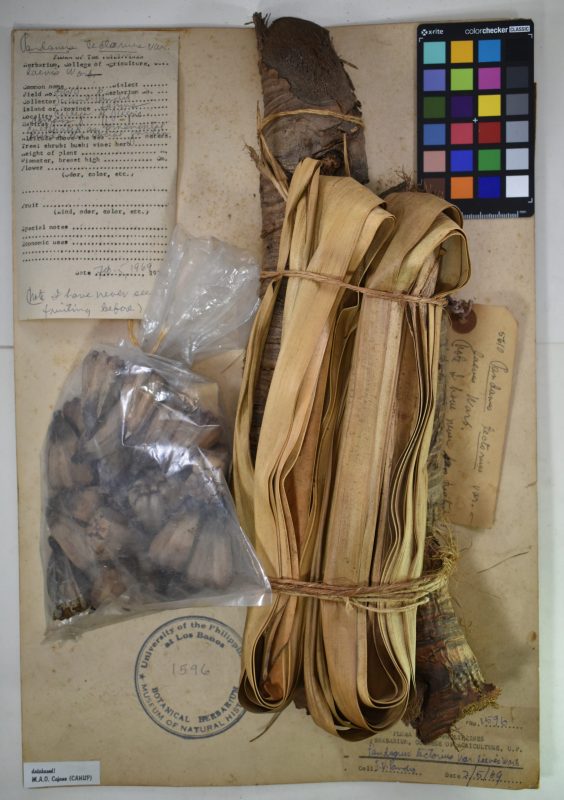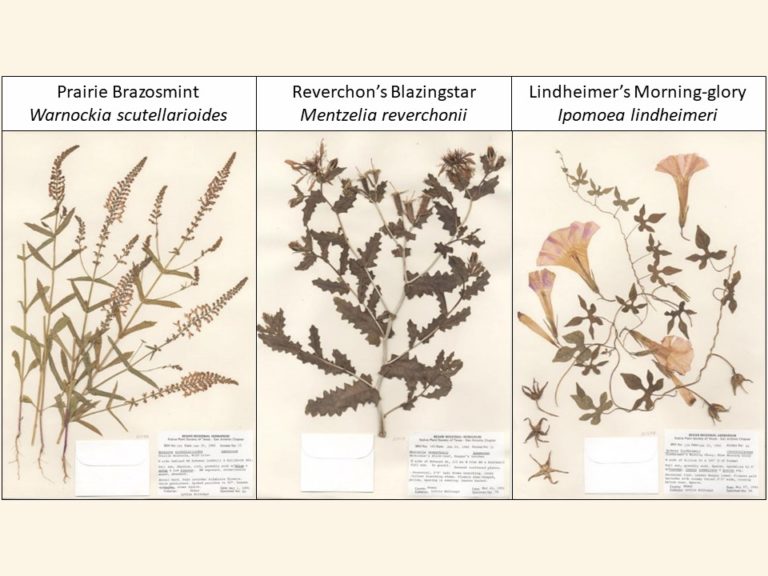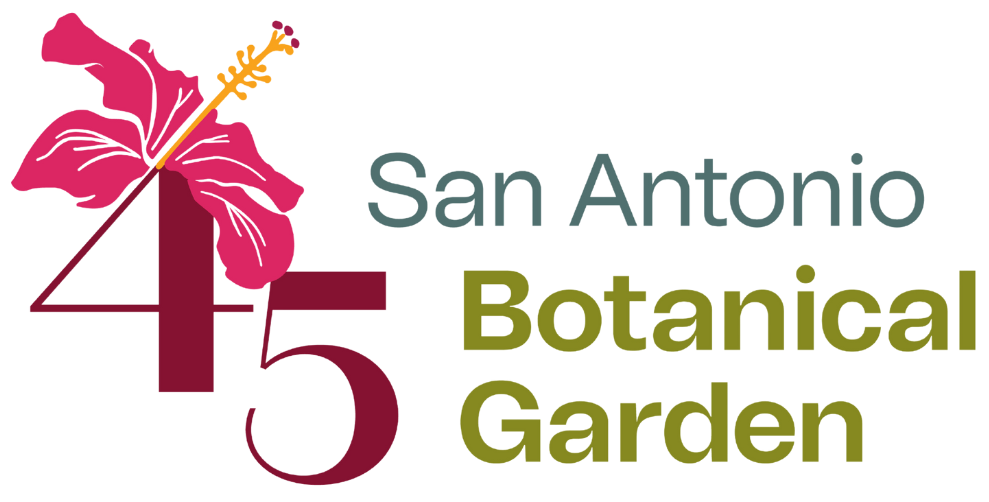
The Ethnobotany and Preservation
of Our Native Plants
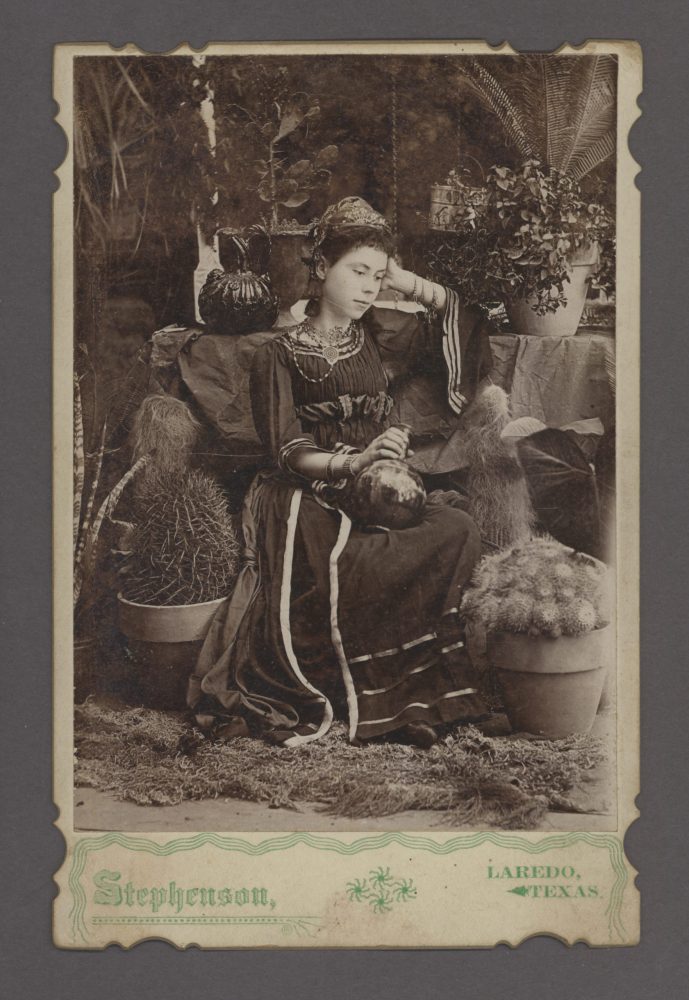
Exhibition and Ethnobotany Introduction
"My name is growing all the time,
and I've lived a very long long time;
so my name is like a story."
- Treebeard, The Lord of the Rings: The Two Towers
In February of 2020, the New York Botanical Garden released Black Botany: The Nature of Black Experience, a virtual exhibition exploring the relationship between plants and enslaved Africans in the Americas. One of the featured plants was the peacock flower, regionally known as Pride of Barbados (Caesalpinia pulcherrima), and very familiar to me because of its use throughout San Antonio landscaping. However, I was unaware of its use by enslaved women of the Caribbean to induce a miscarriage. This act was deemed illegal by enslavers because they lost property and labor, but for the women it could be an act of resistance, preventing children from being born into slavery. Because of the taboo and oral nature of this knowledge, it was almost lost, had it not been for the diligence of archivists and researchers who preserved such knowledge, allowing educators like myself to share these women’s stories.
Plants can be preserved through culinary and oral traditions, photographs, written records, art, and herbaria. It is through these records that a region’s history can be told. However, plants and their roles are often pushed to the background of a story, rather than the driving force of exploration, powerful medicine/poison, or a potent ecological force. Inspired by the Pride of Barbados, and as an ethnobotanist living and working in San Antonio, I want to bring a few of our local plants and their impact into the foreground and help tell their stories.
Texas Native plants are often perceived as ugly, thorny, and sometimes (as in the case of ball moss) a parasitic blight. But our plants are adapted to survive in often harsh environments and indigenous peoples (followed by Spanish, Mexican, Tejano, German, and other settlers) learned to use them in innovative ways. Mesquite (Prosopis sp.) was a primary nutrition source for many southwestern indigenous populations, while Yaupon (Ilex vomitoria) was a major U.S. export, and the unassuming Chiltepin (Capsicum annuum), the great-great-grandmother of all other peppers. But history and memory were not kind to these plants. The native honey mesquite, propelled by aggressive agricultural practice, has become an invasive species in its own state, earning the nickname ‘devil tree’. Yaupon’s name change to vomitoria, was most likely a tactic to drive European consumers to the newly competing Camellia sinensis. The speed at which Capsicum spread once it reached Europe led historians to incorrectly credit its origin and domestication to South Asia. Thus, for many once important but now unappreciated native plants, their praises (if sung at all) are generally limited to gardening homeowners who appreciate a reduced water bill.
The goal of this exhibition is to share the stories of a few native plants and the people who preserved them. The recent media coverage around the Bracted Twistflower (Streptanthus bracteatus) is a good example of a native plant at risk of being lost. Its habitat between the San Antonio and Austin corridor is being increasingly developed and filled with hungry white-tailed deer. Additionally, the fires it depends on are now suppressed to protect infrastructure. The twistflower is currently being considered for “protected status” under the Endangered Species Act which would allow protection to be implemented. The twistflower, however is only one of many plants this region hosts that need to be protected, preserved, and remembered. The plants themselves, supplemented with photographs, paintings, stories, recipes, and a remarkable herbarium of local plants, can help us better understand this place we call home.
Enjoy the exhibition and may it help you think about the plants in your garden, city, and life.
Maeve Bassett
Conservation Programs Specialist
San Antonio Botanical Garden, San Antonio, Texas
Laredo, Webb County, Texas
Stephenson, Henry W. (Henry White), 1858-1924
Gelatin silver
Lawrence T. Jones III Photography Collection
Courtesy of: DeGolyer Library, SMU
The San Antonio Botanical Garden, with support from the Witte Museum and the San Antonio Water System, present Plants/Place, a virtual exhibition exploring five Texas native plants, ways they have been preserved, and their importance to the peoples of this area. In conjunction with Steve Tobin: Rooted (April 16 – October 30, 2022), the Botanical Garden aims to explore the ‘roots’ of this region’s relationship with its plants. This virtual exhibition is supplemented with programming and in-garden interpretation.
Plants
-
Antelope-horn Milkweed
Asclepias asperula -
Texas Persimmon
Diospyros texana -
Louisiana Devil’s-claw
Proboscidea louisianica -
Texas Mountain Laurel
Sophora secundiflora -
Ball Moss
Tillandsia recurvata
Common name(s): Spider Milkweed, Green-flowered Milkweed, Spider Antelope-horns, Popcorn Milkweed, Antelope Horns, Silkweed
Synonym(s): Asclepias viridis, Asclepiodora decumbens
Family: Apocynaceae
Range: Greater Southwest United States and Northern Mexico
Description: Erect-stemmed plant growing to about 15 inches tall. Flowers are greenish with distinctive purplish horns and are present from March to October.
“What is a weed? A plant whose virtues have not yet been discovered”.
– Ralph Waldo Emerson, The Fortune of the Republic (1878)
It’s hard to imagine a more descriptive name: antelope-horn milkweed. Antelope-horn, because of the striking resemblance between the seed pod and the horns of a pronghorn, an antelope relative once common in Texas; milk, referring to the plant’s sap which it releases as a protective response to damage; and lastly weed, in reference to what it was once considered: common and useless. But ‘weed’ betrays a tremendous misunderstanding of the role antelope-horn and other milkweeds have played in the history of this area and beyond.
Central Texas is an important stop on the Monarch migration between North America and Mexico, providing larvae with milkweed, their exclusive food source. Antelope-horn and several other species native to Texas contain poisonous cardiac glycosides, a deterrent for most herbivores. But when eaten by Monarchs, these compounds are incorporated into their system, making them poisonous to predators. Milkweeds have long thrived in Texas but are increasingly scarce as their natural habitats are overtaken by development.
Although toxic, milkweed has been used by people for centuries. Stem fibers were identified in prehistoric textiles and are still used in the American southwest and northern Mexico to make string and rope. An Aztec Herbal, a Nahuatl medicinal codex written in 1552, recommends milkweed as a purgative*, laxative*, and to cure chest congestion. Antelope-horn was used by the Navajo as a ceremonial emetic*, and the sap as a lotion for bites by dogs, coyotes, or other animals. Chewed or ground down and made into a tea, the root of the butterfly milkweed, Asclepias tuberosa, a native of East Texas, was also used to treat everything from congestion to diarrhea to menstrual cramps. The Shell Society of the Omaha nation of northeastern Nebraska and western Iowa used butterfly milkweed for certain rites, whereas the Menominis of Wisconsin and Michigan considered it among their most important medicines. Known as inmortal, Spanish New Mexicans also used it as an abortifacient* and emmenagogue*.
In the early 20th century, Ingram’s Milkweed Cream even promised aging women “everything your skin needs in one jar,” but it was during World War II that milkweed stepped into the frontlines. Ten million pounds of the buoyant milkweed floss were collected to fill life jackets for the U.S. military, replacing the Asian kapok (Ceiba pentandra)* that suppliers had been cut off from. School children and 4H groups across the United States participated in the “Don’t Let Our Sailors Sink” campaign. In the late summer and fall, they harvested the brown mature milkweed pods before the seeds dispersed, dried them, then sent them by train to Petosky, Michigan where they were processed. 4H clubs alone collected enough milkweed floss to fill a million life jackets by 1945.
Modern foragers recommend blanching soft but firmly closed immature pods in saltwater to eat, comparing the taste to okra; others sauté milkweed shoots and puree young leaves to make pesto.
—
* Purgative: Herbs that stimulate blood flow in the uterus; some stimulate menstruation.
* Laxative: Substances that loosen stools and increase bowel movements.
* Emetic: A substance that causes vomiting
* Abortifacient: A substance that induces abortion.
* Emmenagogue: Herbs that stimulate blood flow in the uterus; some stimulate menstruation.
* Ceiba pentandra: a tropical tree of the family Malvaceae. The cotton-like fluff obtained from its seed pods is light, very buoyant, resistant to water, but flammable.
Common name(s): Mexican Persimmon, Black Persimmon, Chapote, Chapote Prieto, ‘Possum Plums, Nespala
Synonym(s): Brayodendron texanum
Family: Ebenaceae
Range: Ravines and canyons of central, south, and west Texas forming thickets through the Edwards Plateau and Rio Grande plains; also found in the Mexican states of Nuevo Leon, Tamaulipas, Coahuila.
Description: Semi-evergreen shrub or small tree which bears small black fruit that ripens July into September.
“I have seen them grow and produce fruit where all the top soil had been
washed away and there was neither crop nor weeds –
save the persimmon, which is one of the great weeds of the South.”
&
“A pasture tree for the beasts and a kingly fruit for man”
– J. Russel Smith, author of Tree Crops (1929)
“Possum up in a ’simmon tree, raccoon on the ground,
Raccoon said, “you son of a gun, shake them ’simmons down!”
– American Folk Song- “Boil them cabbage down” Buck Owens
Sweet, pulpy, with an intensely dark color that stains whatever it comes in contact with, the fruit of the Texas persimmon and the tree from which it grows have been an important plant since people began settling in the Lower Pecos area over 9,000 years ago. Thousands of seeds have been found in middens* or preserved in human coprolites* corroborating its nutritional importance. Discoveries of archeological artifacts such as persimmon wood digging sticks used to pry Sotol and Yucca from the ground, also show the diverse ways the plant was utilized. Its prevalence and importance to the area resulted in the northern entrance of Big Bend National Park being named Persimmon Gap.
The genus Diospyros encompasses over seven hundred species of plants including black wooded ebony trees and Diospyros kaki, the orange fruit most people associate with persimmons. The Texas Persimmon combines the best of these more well-known relatives with its strong wood and delicious fruit. The sapwood of a young persimmon is a clearer yellow color and was used to make a tea for chills and fever. As the tree ages, it forms a strong, dense, and black heartwood that can be polished to a fine sheen. This heartwood has been used in woodworking to create furniture, piano keys, art, and tool handles.
The Texas Persimmon in Spanish is known as chapote, originating from the Nahuatl word tzapotl, a name encompassing multiple soft edible fruits such as sapote or sapodilla. The deep purple date-like fruits do not need much processing but can be made into jams or incorporated into custards and puddings. The juice was also concentrated by indigenous groups and used to create a rich black dye for animal hides, a process still used today in Mexican dye work. The Comanche of the Southern Plains used the fruit to treat mouth sores and hemorrhoids as well as chewing on the bark for heartburn.
Texas persimmon is an important plant within Texas ecology, especially in fall after the fruit has lost its astringency; birds, deer, coyote, ringtails, and javelina feast on the fruit, dispersing seeds as they roam. They are also known as a particular favorite of peccary. The fragrant spring blooms produce nectar that feeds a variety of pollinators and is the larval host for both the gray hairstreak and Henry’s elfin butterfly.
—
*Midden: A dump for domestic waste which may consist of animal bone, human excrement, botanical material, shells, potsherds, and other artifacts and ecofacts associated with past human occupation.
*Coprolite: Fossilized feces, classified as trace fossils as opposed to body fossils, as they give evidence for the animal’s behavior rather than morphology.
Common name(s): Devil’s-claw, Ram’s-horn, Unicorn Plant, Proboscis Flower
Synonym(s): Proboscidea louisiana
Family: Martyniaceae
Range: Southwest United States into Mexico
Description: Low, spreading, bushy plant, 1-2 ft. tall, with large, long-stemmed, palmately lobed leaves.
“Mamie Button’s basket is woven of willow, Joshua tree roots and fibers
from the fruit of devil’s claw…The dark brown designs are woven of
Martynia parviflora which Mamie called devil’s claw. The Hunters and Buttons
cultivate this black-seeded annual in their garden for use in basket making.”
– Panamint-Death Valley Shoshone basketmaker, record by Smith and Simpson, 1964
Of the five plants featured in this exhibition, the Devil’s Claw is the only plant domesticated by humans. This fact was overlooked by early explorers who noted its use by over thirty indigenous tribes across the American Southwest, but did not realize they had been cultivating and selecting for desired qualities for centuries. Plants of the Proboscidea family, which includes P. althaeifolia, P. louisianica, P. parviflora, P. sabulosa, and P. spicata, are all native to the American Southwest with different overlapping and crossbreeding regions. Although they have been called many names, most were at one time called Devil’s Claw because of the large, hooked seed pods that attach to the legs of passing animals to distribute seeds. It is believed that the hooked seeds originally developed to attach to the fur of megafauna such as the mammoth and giant ground sloth, which went extinct at the beginning of the Holocene around 11,500 years ago.
Devil’s Claw is a plant determined to confuse botanists. Originally considered part of the Pedaliaceae (sesame) family because of similarities in flower and seed morphology, genetic research placed it firmly within the Martyniaceae family. They are also considered protocarnivorous, because even though most surfaces are covered with insect-trapping sticky hairs, they do not produce the digestive enzymes required to break down the insects for nutrients. It is theorized that this could be a defense mechanism to stop insects from eating the plant; they could trap insects, attracting carnivorous insects whose nutrient-rich feces benefit the plant; or the stickiness collects sand, creating a pseudo-armor. Regardless, this defense, in addition to its distinctive smell reminiscent of dirty socks, made it well adapted to the American Southwest.
These plants were primarily cultivated and selected for their pod fibers which were used to incorporate dark designs into basketry. The Tohono Oʼodham (named Papago by European colonizers) of the Sonoran Desert would soften the pods with a lye and water mixture, then split and bend them for weaving into baskets. Additionally, the Shoshoni of Wyoming, Idaho, Nevada, and Utah would use the dried pods to create a dye that could be further darkened by burying the pod in wood ash. The Hopi of northeastern Arizona would use the pods in kachinas, a figure depicting the ancestral spirit of the Pueblo Indians, notably in those associated with lightning and rain, as well as other ceremonial paraphernalia. The seeds could be winnowed, parched, sun-dried, stored, and cooked; the pods are currently seeing a resurgence in interest as an edible plant since the tender young pods can be cooked or pickled similar to okra.
Common name(s): Mountain Laurel, Mescal Bean, Mescal Bean, Sophora, Frijolillo, Frijolito, Frigolito, Coral Bean, Big-drunk Bean
Synonym(s): Dermatophyllum secundiflorum
Family: Leguminosae
Range: Central to Southwest Texas
Description: Evergreen, usually multi-trunked shrub or small tree ranging from just a few feet tall to more than thirty feet. Popular as a native evergreen ornamental tree, valued for its handsome, dark green foliage and lush early spring blooms.
“In early days these beans were so highly valued by the
Indians of the Mexican border region that a string of
them 6 feet long would be accepted in barter for a pony.”
– Mr. Bellanger of Texas
(500 Wild Flowers of San Antonio and Vicinity, Ellen D. Schulz, 1922)
Based on description alone, it may be difficult to believe that the Texas Mountain Laurel is real. In spring, it becomes covered in large wisteria-like purple flowers with a distinctive smell of grape Kool-Aid. These flowers later form into pale hard pods that contain several smooth, cherry-red seeds. Children who grew up in the San Antonio area know very well the toughness of the seed’s shell, which could be aggressively rubbed against concrete, building up enough friction to burn your friends/siblings, earning it the name “burn-berry” or “burn-bean.” This hard shell is a common desert adaptation and can be found in other plants such as bluebonnets and mesquite. The seed can roll around a bit, be scraped up, or be eaten by an animal before it settles into a new area where it can sprout away from the mother plant. Internally, the laurel bean contains the alkaloid cytisine, which can cause nausea, convulsions, and death if a seed with a cracked shell is consumed.
In 1957, anthropologist James Howard documented use amongst Apache, Comanche, Delaware, Iowa, Kansa, Omaha, Oto, Osage, Pawnee, Ponca, Tonkawa, and Wichita tribes. Backed up by archeological evidence, the bean, primarily called mescal, was an important plant for indigenous peoples. Laurel beans have been found in locations of early human settlement in Southern Texas and Northern Mexico, often as decorations and clothing remnants. This use of the plant was recorded in 1539 by Spanish explorer Cabeza de Vaca and again in 1820 by the Stephen Long Expedition. The shells are used by artisans today, but the toxins can make it a difficult medium to work with. Instead of drilling, a hole can be burned with a red hot needle or hatpin to reduce the risk of aerosolizing the toxins. The sapwood can also be used for a yellow dye.
The beans have been found in pouches of healers. Decoctions* of ground beans were poured into the ear for earaches and ear sores, and also carried as protection against contamination from menstrual blood. In addition to their health properties, they were also used for their psychoactive properties, including being used in ceremonies along with nicotine. Men would consume beans that had been soaked in water, creating a stimulant effect that allowed people to accomplish feats such as walking on hot coals. It has been theorized that the toxicity and risk associated with the mescal bean led to its decline in ceremonial use and was replaced by peyote, however, the beans are still used for ceremonial adornments during peyote ceremonies. The names mescal bean and big-drunk bean most likely came from the powder being added to mezcal, causing delirious exhilaration followed by multiple days of deep sleep.
—
Decoction: the liquor resulting from concentrating the essence of a substance by heating or boiling, especially a medicinal preparation made from a plant.
Common name(s): Ball Moss, Bunch Moss
Synonym(s): Diaphoranthema recurvata, Renealmia recurvata
Family: Bromeliad
Range: Texas, Georgia, Florida, Louisiana, Arizona, Mexico, Central and South America, Islands in West Indies
Description: Ball moss is a small, tufted gray-green epiphyte with scaly, recurved, linear leaves 2-6 in. long.
“The rolling stone rolls echoing from rock to rock;
but the rolling stone is dead.
The moss is silent because the moss is alive.”
― G.K. Chesterton
“To destroy a wild thing for pride seems a potent act of domination.”
― Robin Wall Kimmerer, Gathering Moss: A Natural and Cultural History of Mosses
Trees throughout the Hill Country and Southern Texas are inhabited by an infamous and regionally contentious small, pom-pom-shaped plant. Ball moss, in spite of its name, is in the Bromeliaceae family (which includes pineapples and neoregelia) and is not a true moss. Similar to many orchids, ball moss is an epiphyte, using pseudo-roots to cling to trees for access to sunlight, pollinators, water, and seed-dispersing wind. Its thin, curled leaves are covered in fine scales that transition from silver to green as they absorb rainwater. Small purple flowers project from the leaf cluster, which eventually turn brown when dispersing seeds.
Contrary to popular belief, ball moss is not a parasite that steals resources from its host, nor is it significantly harming the trees it inhabits. If this were the case, you would not see it growing on non-living structures such as power lines and fences. It actually benefits its host by harboring Pseudomonas stutzeri, a bacterium that converts nitrogen in the air into a compound that most plants need to survive. Additionally, the ground below, littered with fallen ball moss, is receiving important nutrients and insulation as they decompose. The misunderstanding generally arises from the fact that ball moss is primarily found concentrated on dead or dying branches and tends to grow in tumor-like masses, giving humans a sense of unwellness not present with other epiphytes like Spanish moss, Tillandsia usneoides. Instead of causing or expediting the death of the branch/tree, the ball moss is merely benefiting from the reduced leaf cover, giving them better access to the sun that their less lucky siblings did not get when their seed landed on a healthy tree.
As a common and accessible plant, humans used ball moss and Spanish moss for stuffing material and for absorption as furniture, diapers, and menstrual pads. In Florida, people could make a living collecting Spanish moss for use in cushion manufacturing, an industry that at one point had 35 processing plants throughout the state.
Mostly considered a nuisance today, its prevalence means it is a common source of interest for innovative ideas. In Jamaica, it is being researched for its anti-cancer, anti-microbial, and anti-diabetic properties. University of Texas alumni William Niendorff explored the use of ball moss for green roofs, using the light but hardy plant to help control temperature, decrease runoff, and provide habitat for native species without the downside of heavy soil.
Herbaria
Her·bar·i·um /ˌ(h)ərˈberēəm/
plural: herbaria
A systematically arranged collection of dried plants.
In institutions around the world, collections of rocks and minerals to animal, insect, and plant specimens have been accumulated, providing vast amounts of information regarding the Earth’s history. These collections provided the foundation for biological and ecological studies that revolutionized scientific thought; today they can be crucial tools to answer urgent questions and advance scientific understanding. The challenge is knowing that they exist and accessing them.
My experience working with herbaria started as a Master’s student at the University of Texas in my hometown of San Antonio, where I got the opportunity to work with the Witte Museum which, as a child, had inspired me to pursue a career in science. During my time there, I focused on the Witte’s herbarium, a collection of 7847 plant specimens which include almost 1200 specimens from the Harry T. Cliffe collection. My interest in learning about San Antonio and Southern Texas’ unique ecological landscape, as well as the herbarium’s ties to Ellen Schulz Quillen inspired me to honor her legacy by studying and promoting the collections she began compiling long before I was born.
Herbaria are organic reference books. Together they serve as a reference library and resource for botanical education and research. Often overlooked are the herbaria housed in smaller regional institutions. These harbor valuable information that can expand our existing knowledge, filling in potential knowledge gaps, particularly for underrepresented time periods and geographies. They help us understand the natural world around us, what is changing, and sometimes what has been lost. These collections also act as important contributors to an increasingly large and valuable pool of publicly available data.
My hope for the future is that herbaria continue to inspire science and the public, allowing researchers around the globe to fill in knowledge gaps and plan future research and collections. When people engage with collections, they can be portals for discovery.
Gabrielle Vara
Graduate Student – Environmental Science and Ecology, Tuggle Scholar University of Texas
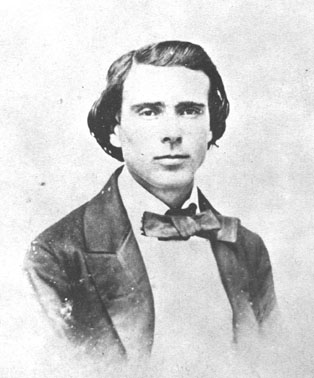
“Trolls have 5,400 words for rocks and one for vegetation.
“Oograah” means everything from moss to giant redwoods.
The way trolls see it, if you can’t eat it, it’s not worth naming it.”
— Terry Pratchett (Moving Pictures [Discworld, #10; Industrial Revolution, #1])
Names are clues to what a culture values and how it understands itself. The term “milkweed” is a great example; it grew easily, did not seem to have much use, and sometimes appeared where it wasn’t wanted, earning itself a place in the “weed” category. But just as milkweed turns out to be more useful than its name implies, place names also belie the perspective of the namer. Consider for a moment how we talk about West Texas: it is only west of course if we are talking about Texas. From an alternative view, it is the northern part of the Coahuilan Desert.
While the rules of taxonomy set up a framework for naming plants, the first person to identify and document a plant gets some say in the naming rights. That is why many Texas plants share names with the early European and American botanists who recorded this region in the 19th century. Lindheimera texana is a daisy first documented by Ferdinand Jacob Lindheimer (1801-1879); Phlox drummondii was first documented by Thomas Drummond (1793-1835); Salvia greggii, more commonly known as autumn sage, was first documented by Josiah Gregg (1806-1929); and the quintessential San Antonio prickly pear cactus, Opuntia engelmannii, was first documented by George Engelmann (1809-1884). Usually based in Greek or Latin, plant names often include descriptions and geographic references.
Antelope-Horn Milkweed: Asclepias asperla
Asclepias is the genus for all milkweed plants and was named for Asciepius, the Greek god of healing whereas in Ancient Greek asperla means “rough”.
Texas Persimmon: Diospyros texana
Diospyros, means “divine” (dios) “food” (pyros). The texana genus includes several plants found in Texas including Zizania texana, a rare wild rice, and Cucurbita texana, a gourd similar to acorn squash.
Devil’s Claw: Proboscidea Louisiana
Proboscidea is a genus of plants that spread seeds by hooking onto animals and then falling and being crushed open by its feet. This name originated from the Greek word for “means of obtaining food,” and the Latin word “proboscis” that means long, tubular nose; louisianica, like texana, is a geographic descriptor.
Texas Mountain Laurel: Sophora secundiflora
Sephora is the genus of several dozen small trees and shrubs in the pea family; The species designation of secundiflora comes from the Latin for “having flowers arranged or turned to one side of an axis” and, sure enough, the Texas Mountain Laurel’s aromatic blooms spill down on one side of the stem.
Ball Moss: Tillandsia recurvata
Carl Linnaeus named the genus Tillandsia, which includes over 600 epiphytes and aerophytes, in honor of his friend and colleague Dr. Elias Tillandz; recurvata means “bent back” in Latin.
Collected by Juan V. Pancho, 1969
UPLB MNH Digital Archives
CC BY-SA 4.0
Important Figures of Note
(1887-1970)
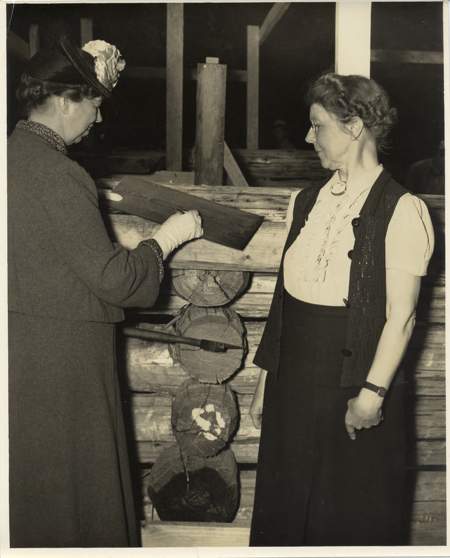
Ellen Dorothy Schulz Quillin moved to Texas from Michigan for graduate work at the University of Texas and never left. She became a high school teacher, lecturing on systemic biology and natural history at UT Austin, and writing 500 Wild Flowers of San Antonio and Vicinity. She also made a vital contribution to natural history by facilitating the purchase of the Henry Philemon Attwater Collection, a nationally recognized ornithologist and avid collector of all things Texas. Supplemented by $65,000 bequeathed by a local businessman, Alfred Witte, and additional funds raised by school children selling bluebonnets, baking cakes, and performing plays, the Witte Museum opened its doors in 1926 to highlight the Attwater Collection. With her husband, Roy Quillin, Ellen spent countless hours traversing the diverse landscape of Texas, documenting both flora and fauna. Ellen served as the Witte’s Director for 34 years and another 10 as its Director Emeritus.
(1875-1961)
Best known for Roadside Flowers of Texas, a collection of more than 250 paintings of Texas wildflowers published shortly before her death in 1961, watercolorist Mary Motz Wills spent much of her adult life lovingly documenting flowers throughout the Americas. After growing up in Waco, she trained at the Art Students League in New York, and during the early 20th century accompanied her husband, Lt. Colonel Will Dunbar Wills, on assignments in Central and South America painting the exotic flowers she saw. However, it is for her Texas wildflower paintings that she is best known. In 1935, 1943, and 1955 Schultz arranged for some of Motz Wills’ work to be shown at the Witte in San Antonio, many of which are housed at the Witte Museum.
(1921-2008)
In 1964, Lieutenant Colonel Harry T. Cliffe retired from the US Army and settled in San Antonio, Texas. An infinitely curious person, he served as local chapter president of the American Society of Mechanical Engineers and the Native Plant Society of Texas (NPSOT) as well as volunteering at the still young San Antonio Botanical. For the 1986 Texas Sesquicentennial, NPSOT celebrated by combing through historical documents for important plants in the area’s history and creating “A Plant List for Bexar County, Texas”. Cliffe, however, not only documented the plants in Bexar County, but also trained a small army of volunteers to collect and preserve specimens in a herbarium. Throughout the 1990s, the collection grew to over 1,000 specimens and was digitized and added to the Ladybird Johnson Center’s Native Plant database. Known today as the Harry T. Cliffe Bexar Regional Herbarium, the specimens are currently housed at the Witte.
Contributors/Credits

Conservation Programs Specialist, San Antonio Botanical Garden
Maeve grew up moving around the world with her anthropologist parents, an upbringing which fueled her interest in plants, the environment, and cross-cultural foodways. These interests led her to a variety of jobs, including The David C. Driskell Center, which focuses on African American art; the New York Botanical Garden; a Chinese tea import company; and managing a refugee health program for the International Rescue Committee. Maeve received her Master’s of Applied Anthropology from the University of Maryland with a focus on ethnobotany, a specialty which she continues at the San Antonio Botanical Garden through education, research, writing, program development, and interpretation.
www.MaeveBassett.com
mbassett@sabot.org
Daisy Delgado
Conservation Educator, San Antonio Botanical Garden
Graduate Student – Master’s of Integrated Agricultural Sciences, Texas State University
John Hamilton
Conservation Educator, San Antonio Botanical Garden
Graduate Student – Master’s of Water Resources Science and Technology, Texas A&M
Helen Holdsworth
Chief of Engagement, Witte Museum
Carrie Klein
Educator
Master Naturalist; Volunteer, San Antonio Botanical Garden
Leslie Ochoa
Director of Collections, Witte Museum
Gabriela Vara
Graduate Student – Environmental Science and Ecology, Tuggle Scholar University of Texas
gabriela.vara@my.utsa.edu
Images Courtesy of:
Gage Brown, Artist
www.gagebrown.com
@locogoose
Institute of Texan Culture
University of New Hampshire, Milkweed Pod scrapbook
Special Thanks to:


Selection of Main Source Materials
Articles
HOWARD, J.H. (1957), The Mescal Bean Cult of the Central and Southern Plains: An Ancestor of the Peyote Cult?. American Anthropologist, 59: 75-87. https://doi.org/10.1525/aa.1957.59.1.02a00070
BRETTING, P. K., & NABHAN, G. P. (1986). Ethnobotany of Devil’s Claw (Proboscidea parviflora ssp. parviflora: Martyniaceae) in the Greater Southwest. Journal of California and Great Basin Anthropology, 8(2), 226–237. http://www.jstor.org/stable/27825274
Conway GA, Slocumb JC. Plants used as abortifacients and emmenagogues by Spanish New Mexicans. J Ethnopharmacol. 1979 Oct;1(3):241-61. doi: 10.1016/s0378-8741(79)80014-8. PMID: 232204.
Books
Earth Medicine, Earth Food (1980) by Michael A. Weiner
Remarkable Plants of Texas: Uncommon Accounts of Our Common Natives (2009) by Matt Warnock Turner
Native American Ethnobotany (1998) by Daniel E. Moerman

